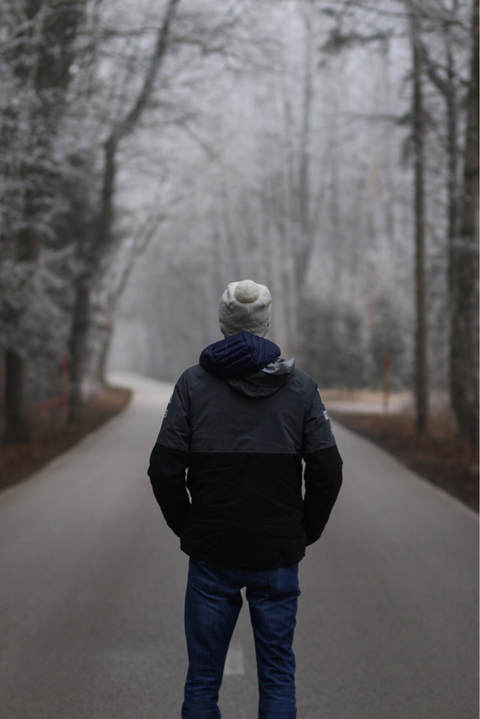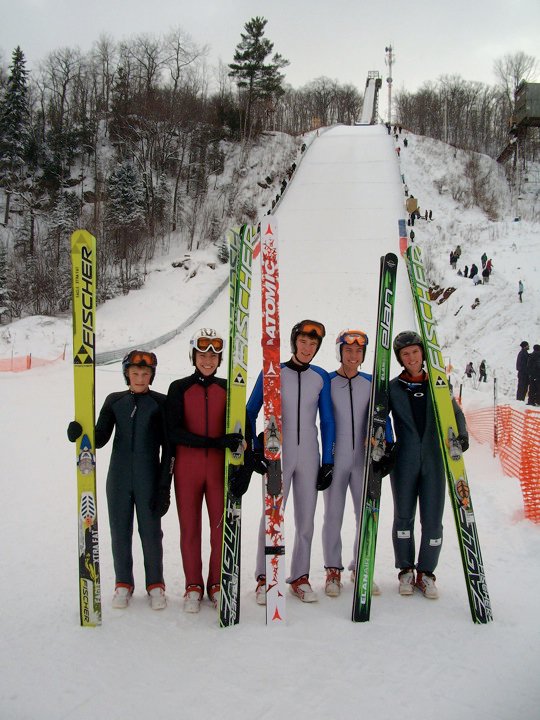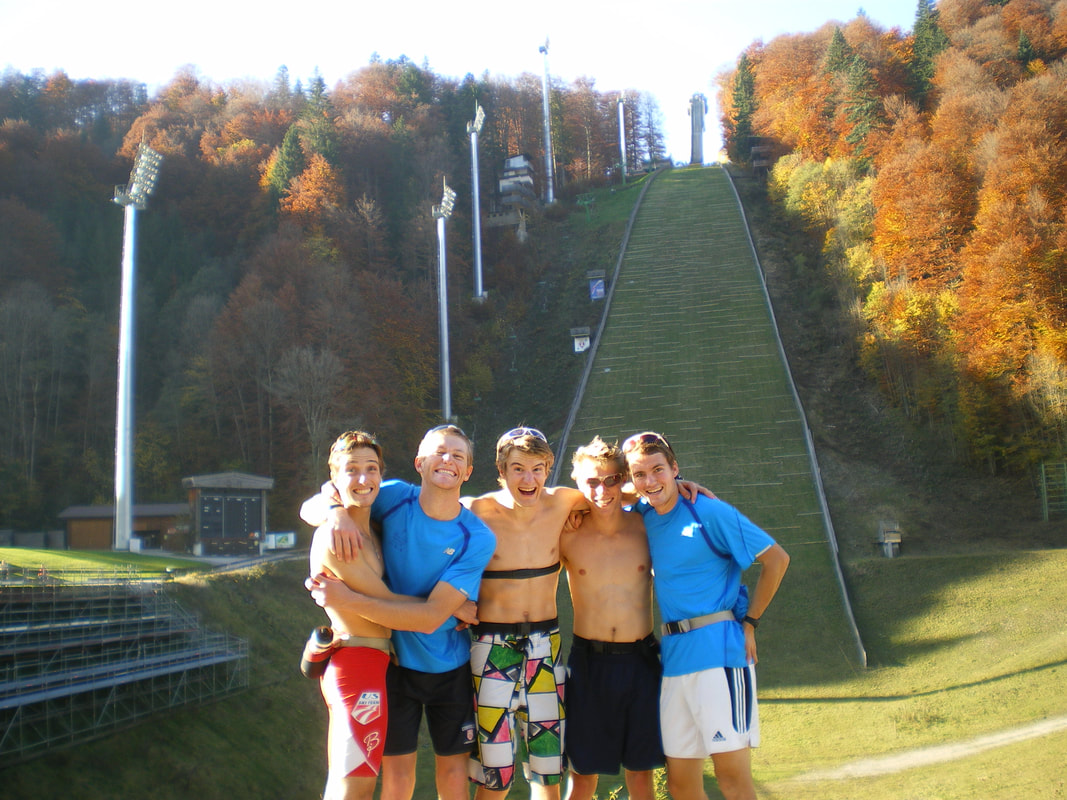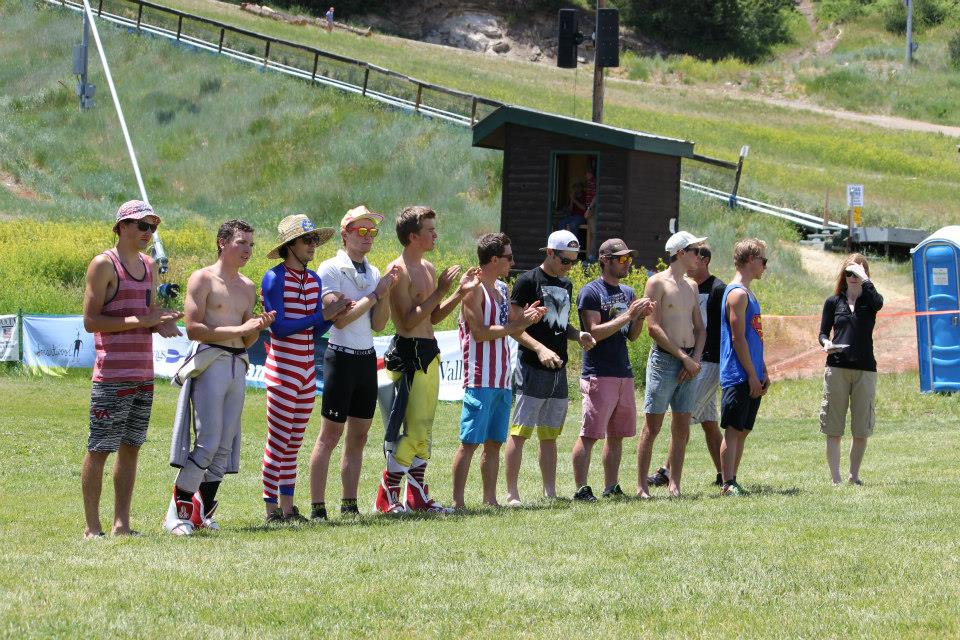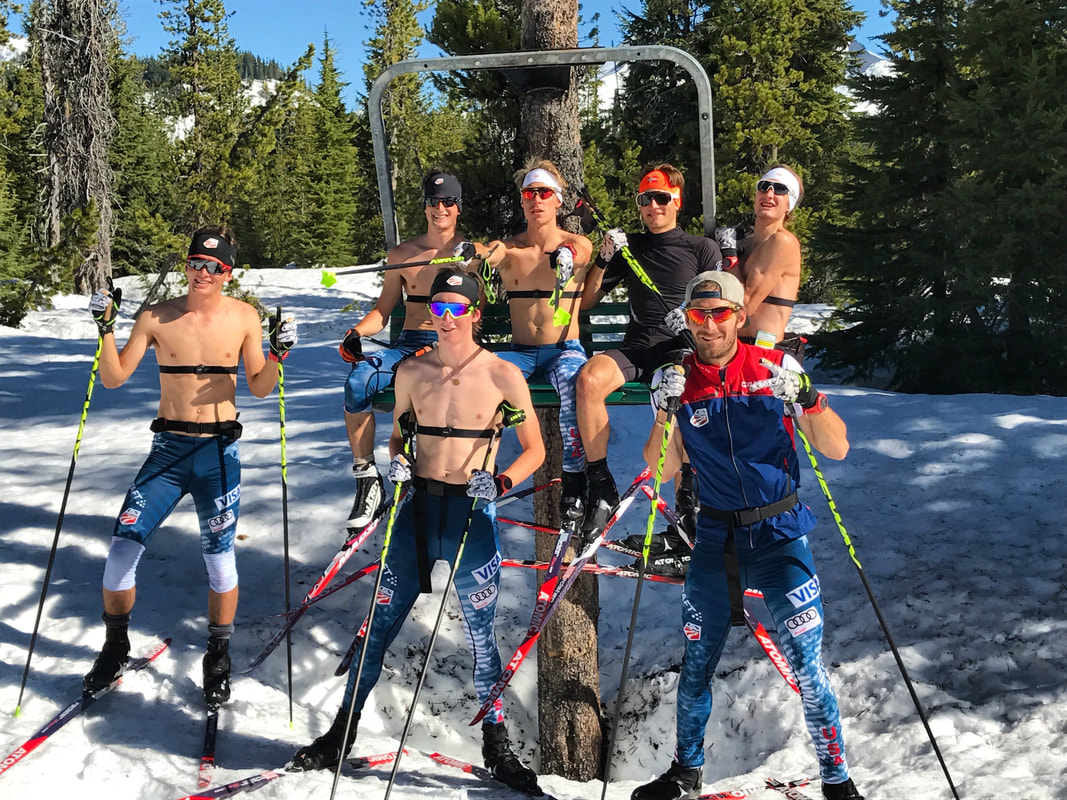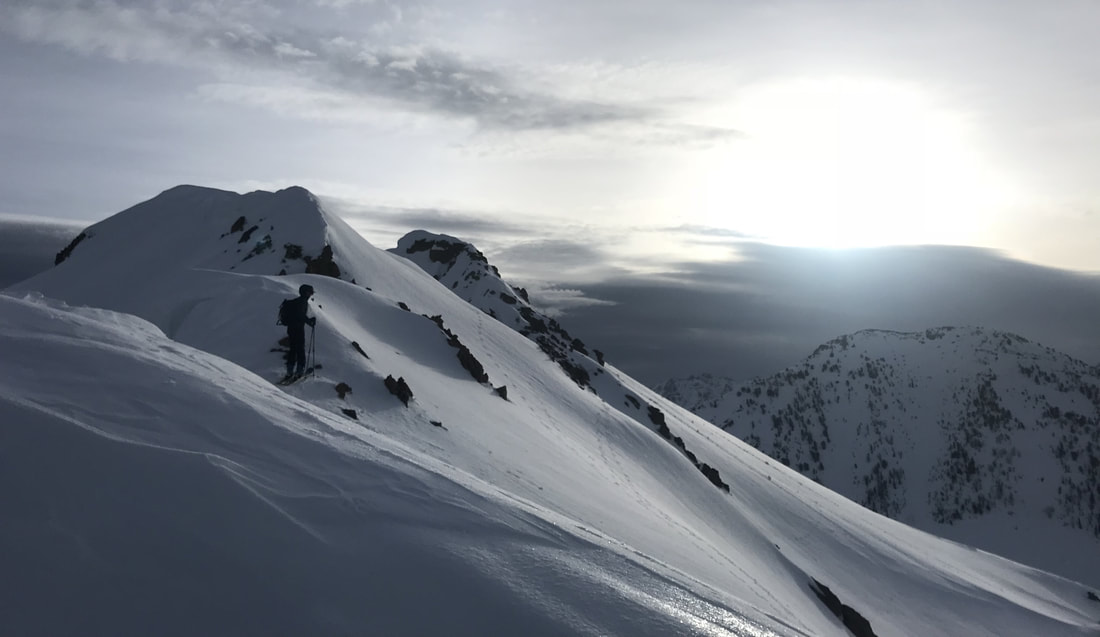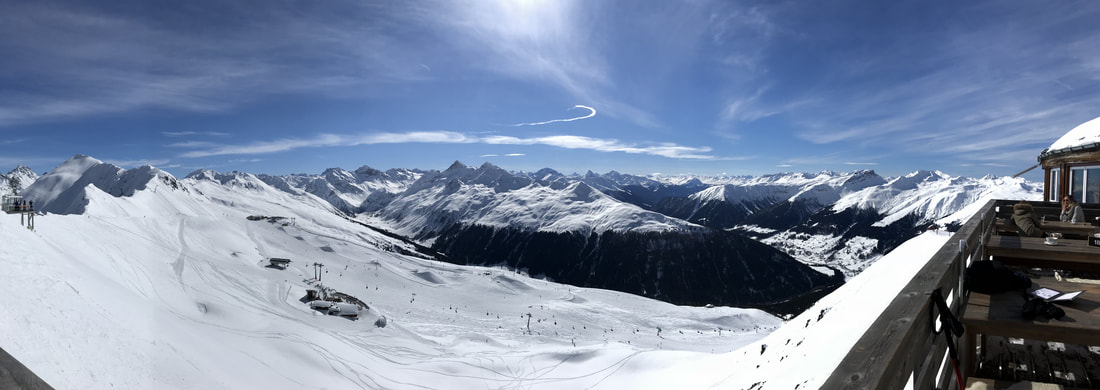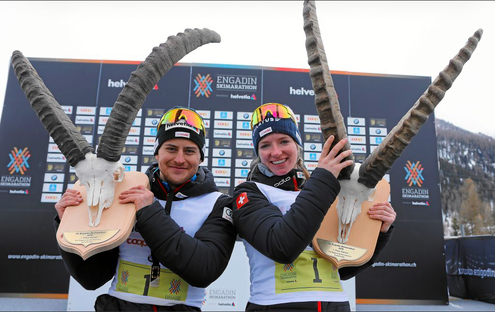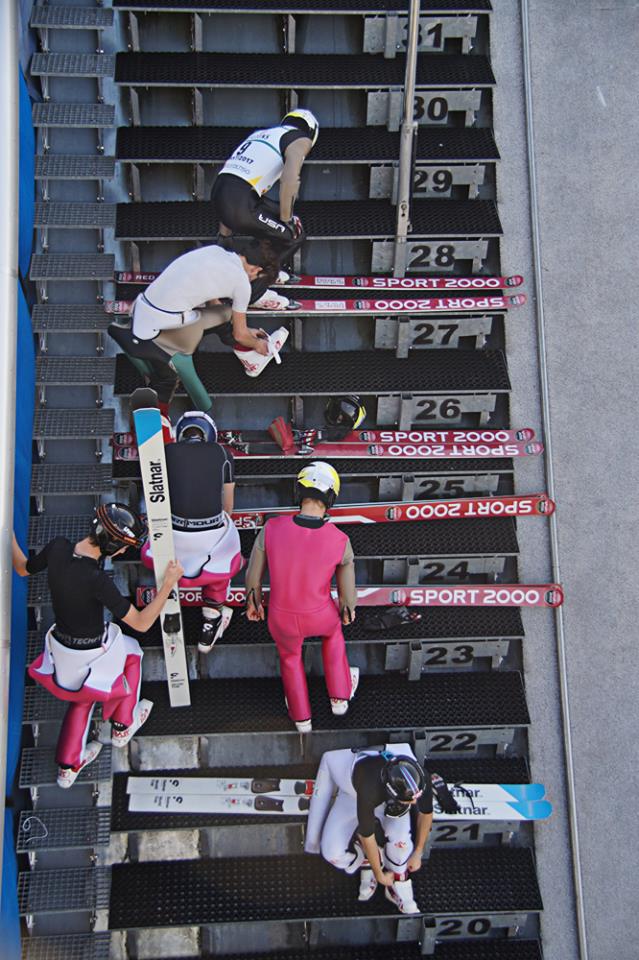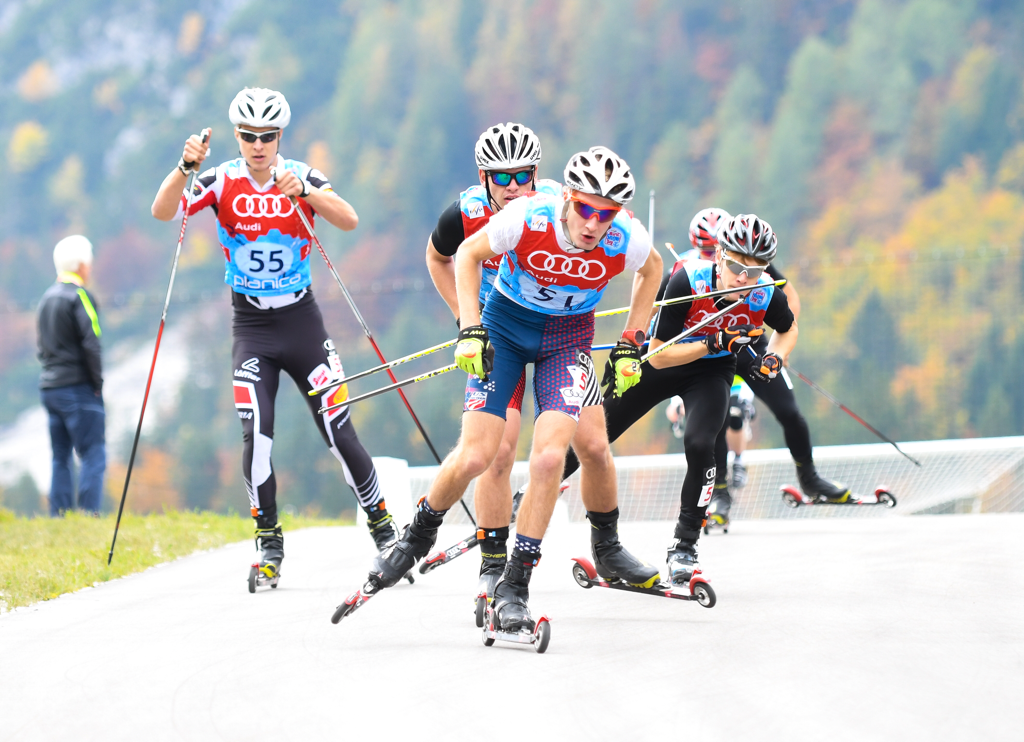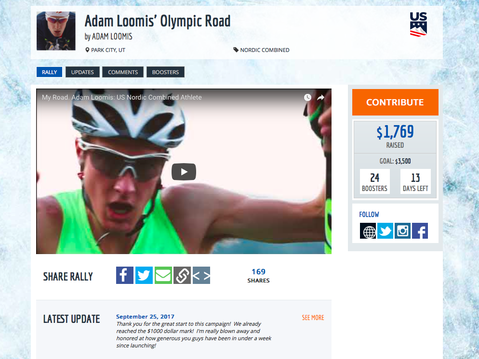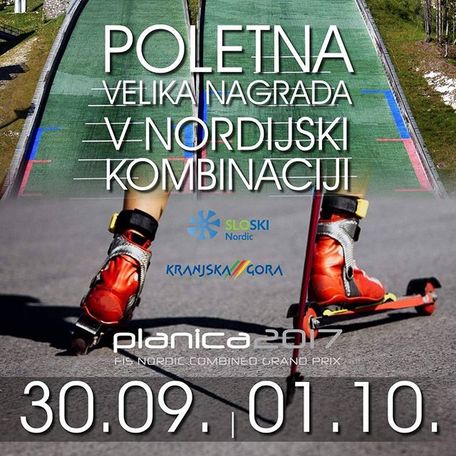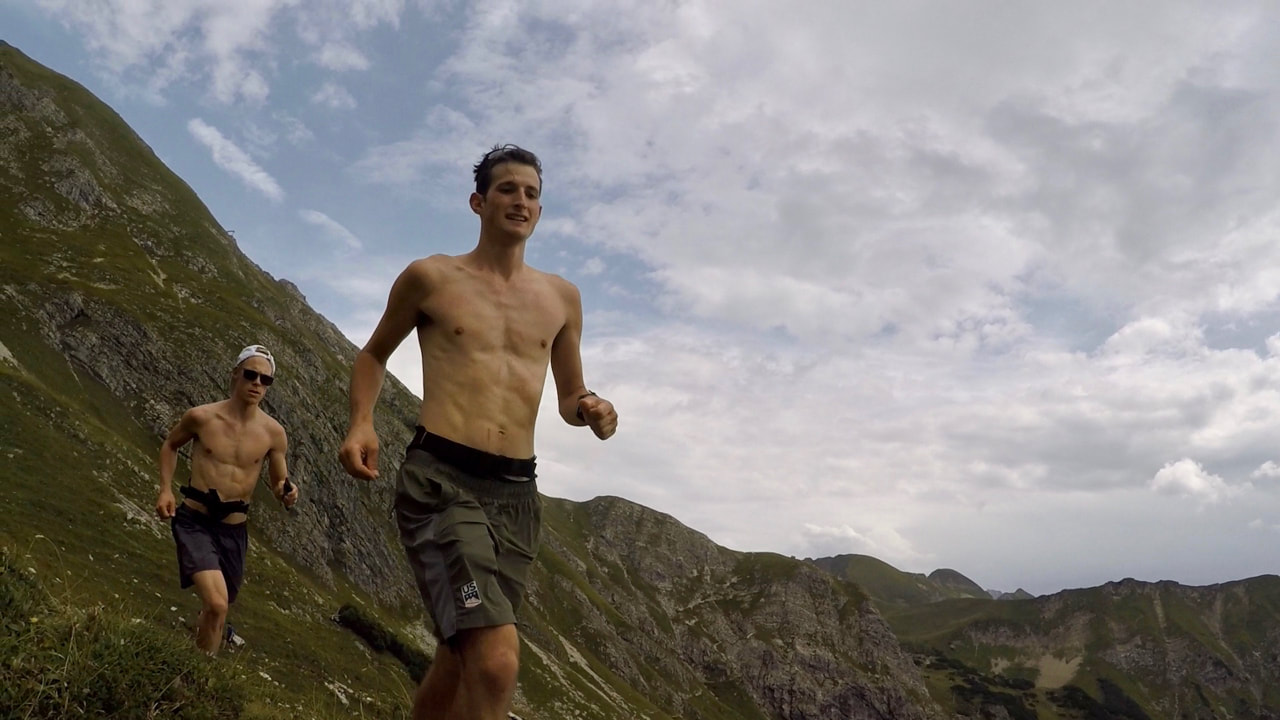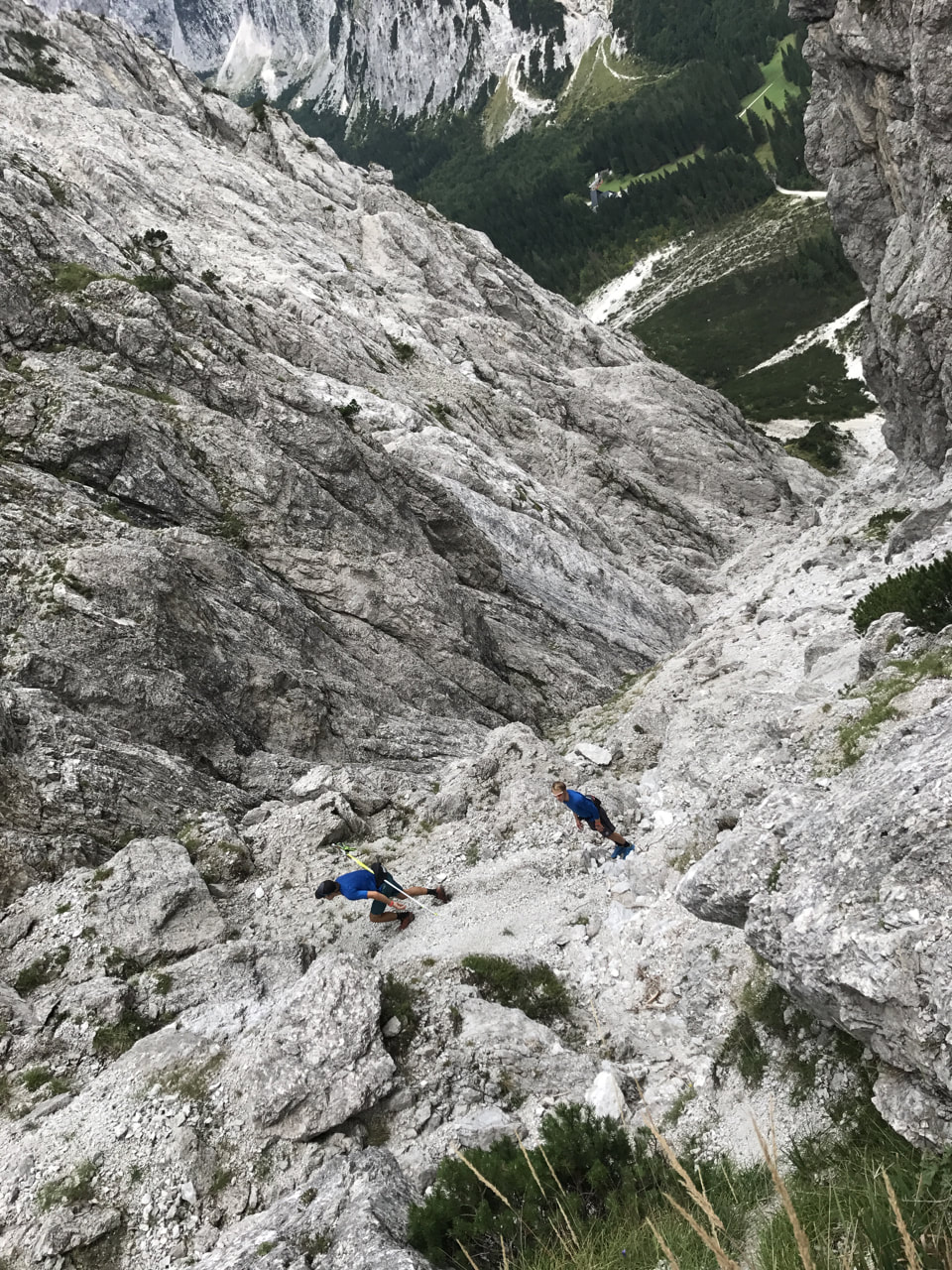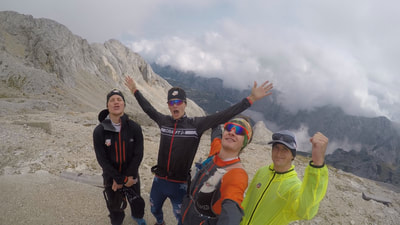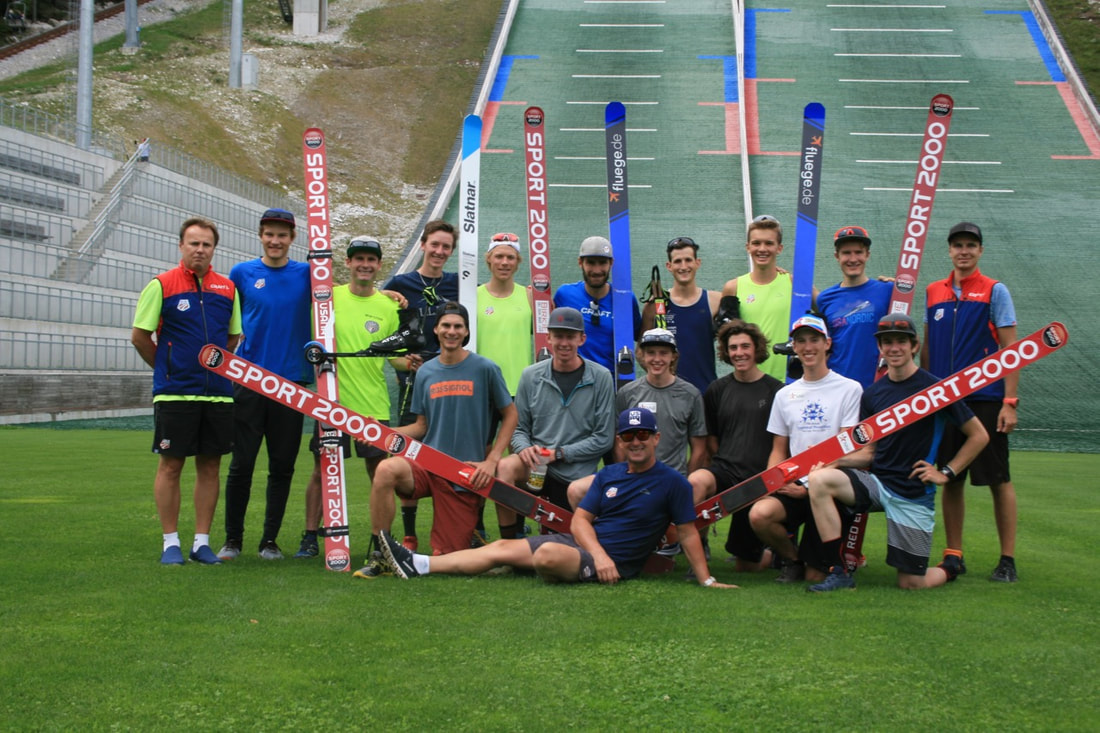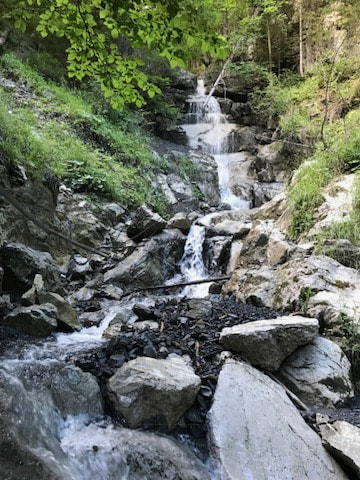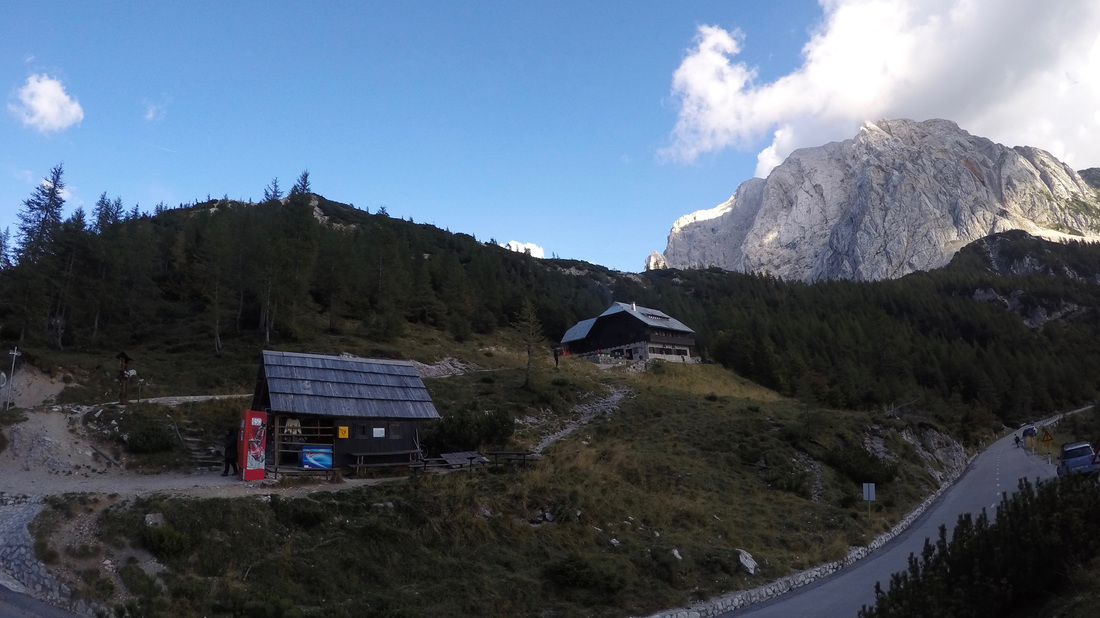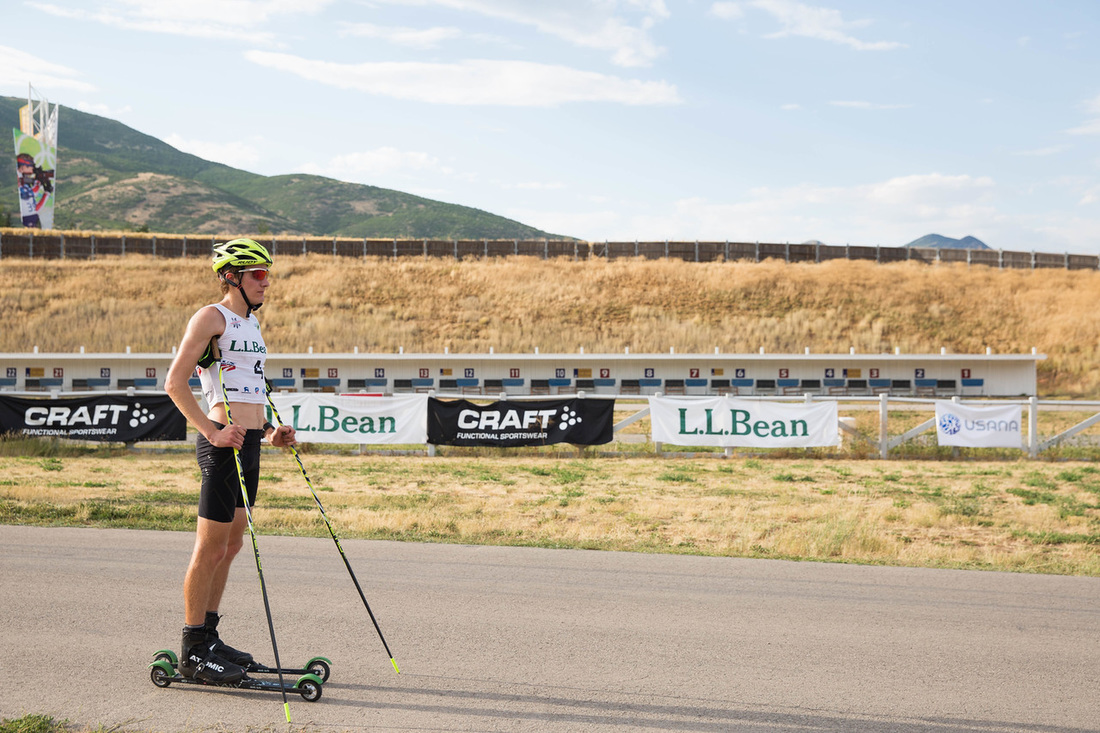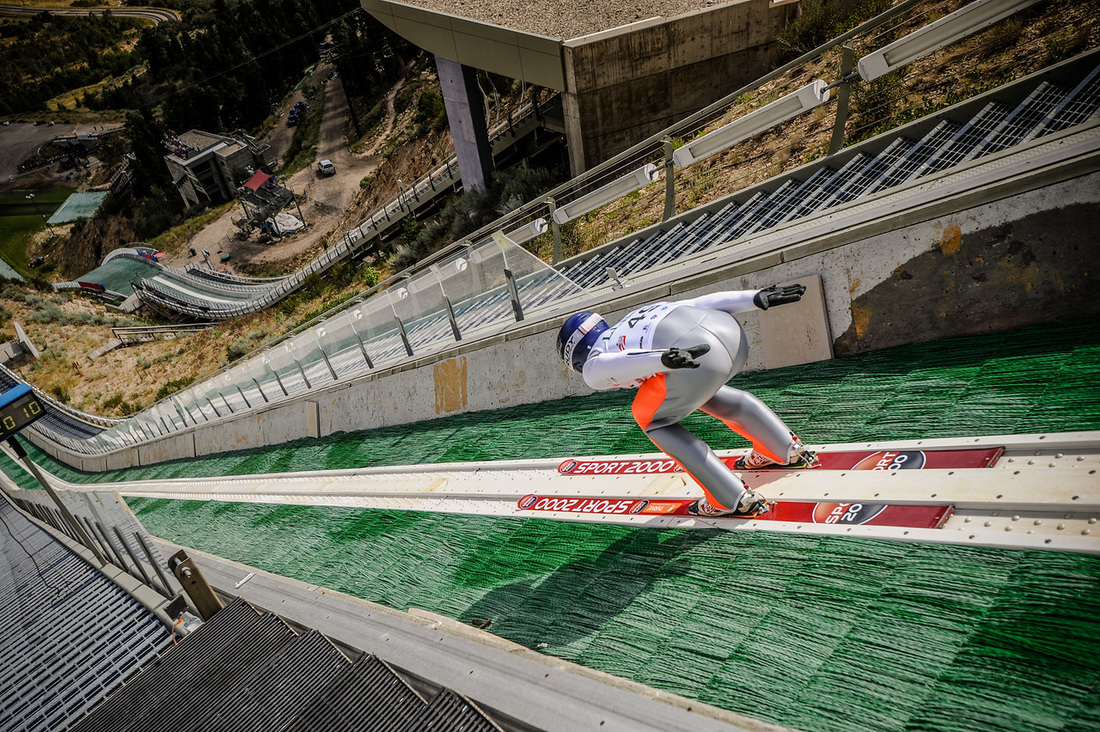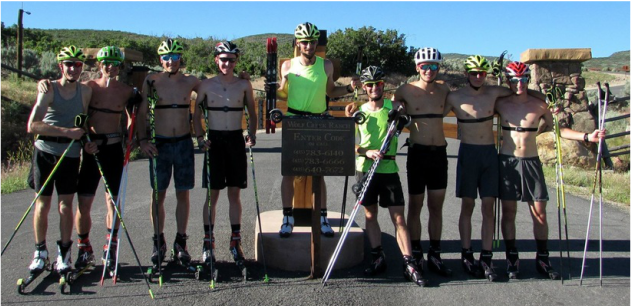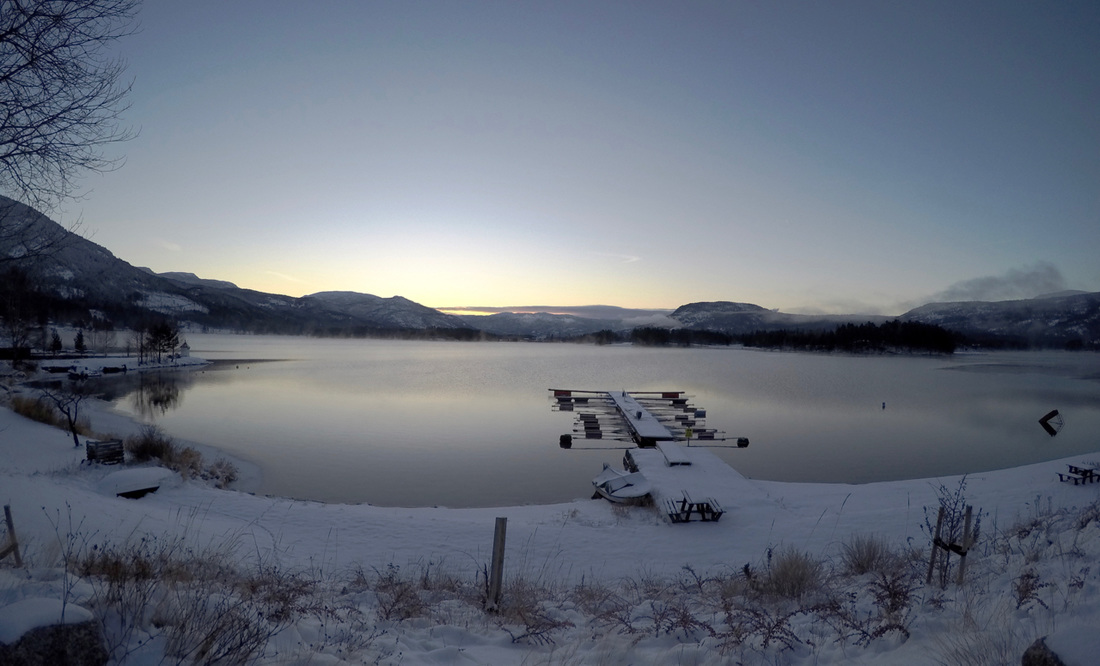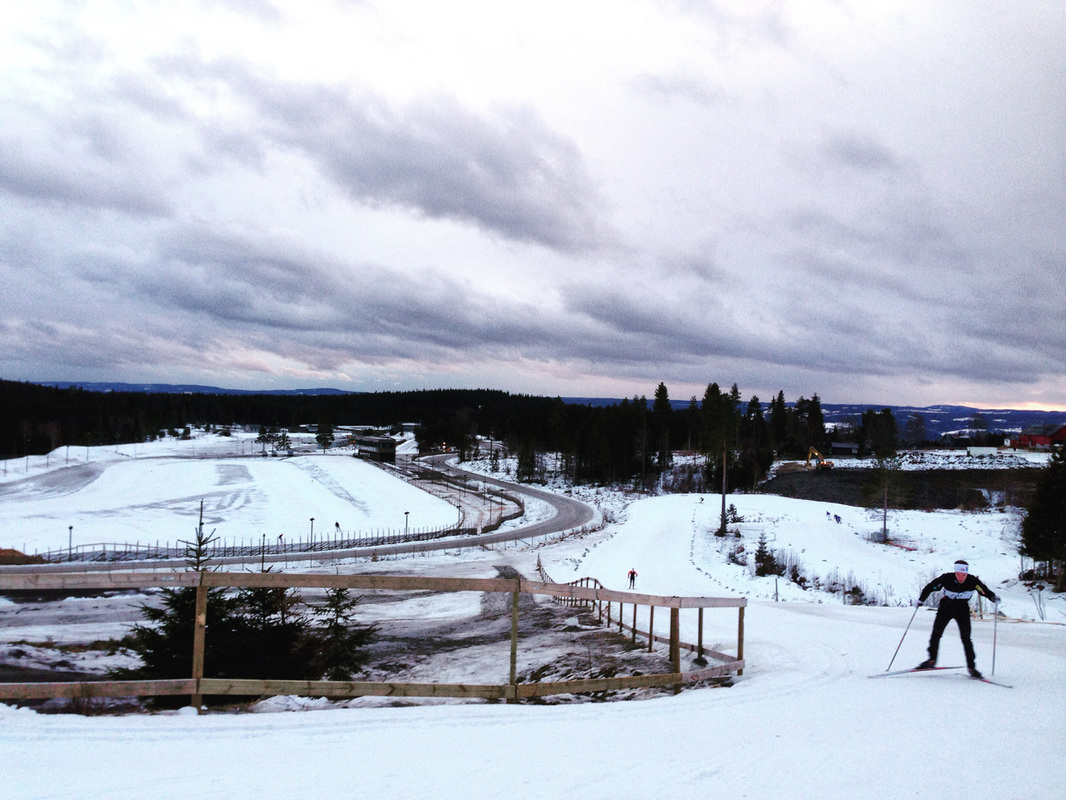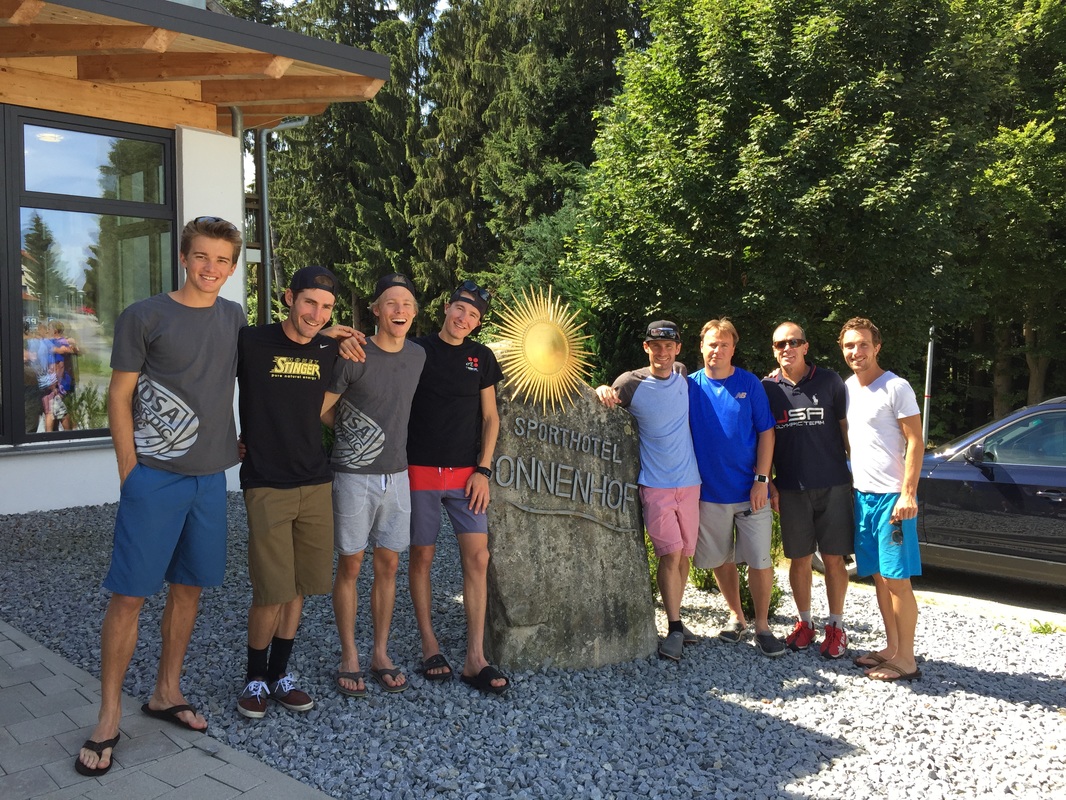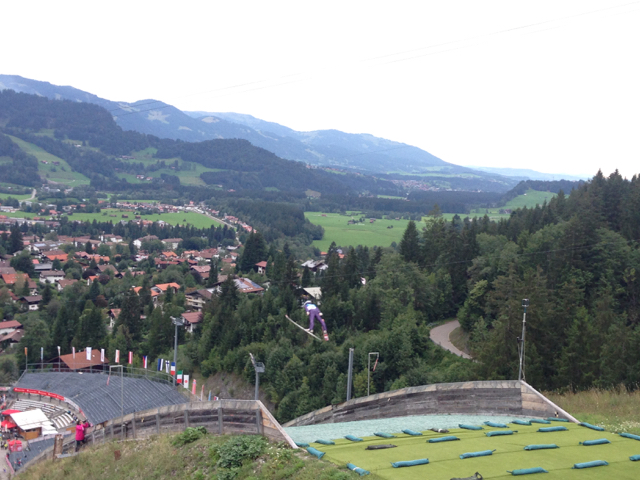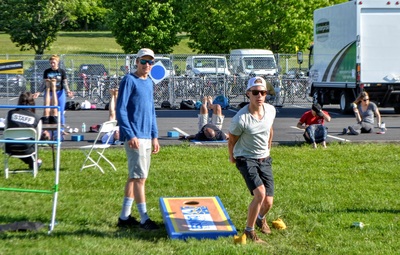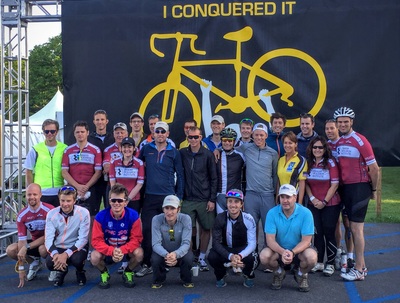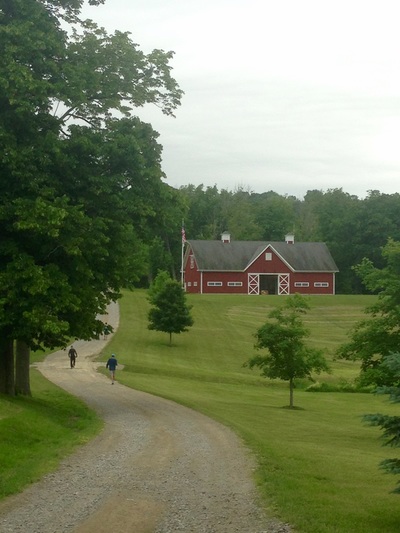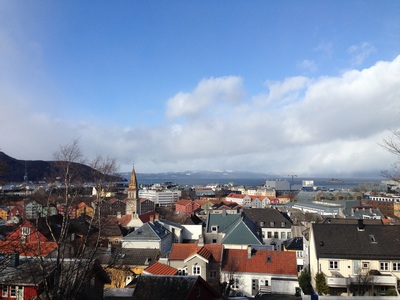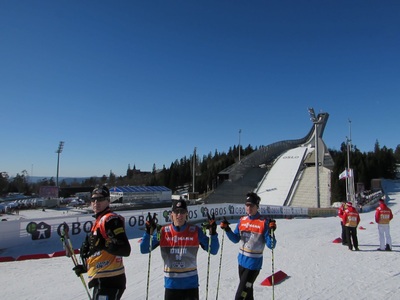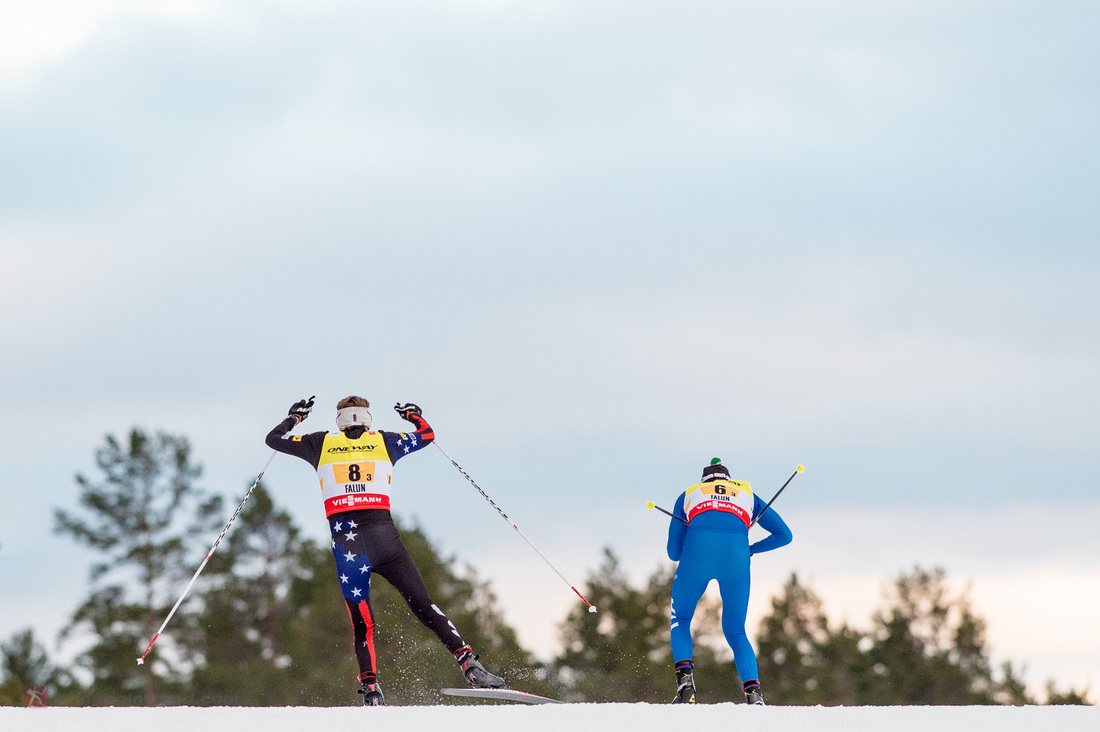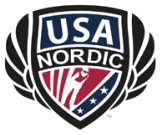|
This has been a challenge for me to write. It might be tough for some of you to read. It is, however, important for me to get this down into words. I’m ending my time as a Nordic Combined athlete - retiring, moving on, hanging them up, pick which phrase you like. I prefer to see the next chapters as continuations of the incredible journey that this sport brought me on. This ride has been unimaginable. I know enough now to not even attempt to guess the future, but I'm confident that this sport and community will continue to have a substantial impact on me. I want to be clear that I’m leaving this sport without an inkling of bitterness. I’m proud of what I’ve accomplished as an athlete, and even more grateful for the way this sport has shaped who I am. Nonetheless, I have a few clear reasons for my decisions, which I need to outline for all our sakes. By the end of this, I hope that the many people who have stood beside me through my journey will understand. I also hope that this is enough to leave my current teammates and coaches behind. This has been a part of the decision that has weighed heavily on me, but ultimately, I can’t succeed in an individual sport without personal motivations. Here are, to the best of my abilities, a few condensed points outlining my decision. 1. Improvement My foremost criteria for remaining a full-time athlete has been my ability to demonstrate improvement. As long as an athlete is improving, he’s going to get where he or she wants to in a matter of time. On the jump in particular, I haven’t been able to maintain satisfactory improvement over the past few years. Certainly, a few of my best jumps might have been in training this year, but almost none of them came this winter. Beyond just this winter, I’ve struggled to reach my jumping goals for years. I don't need to list off every box that I haven’t ticked, but it is safe to say that I haven’t met most of the performance goals that I’ve written since making the National Team in 2012. 2. Belief My point here isn’t to say that I’ve failed. Looking back on my career, it certainly doesn’t feel that way to me. I have no regrets for pursuing something I love, and that’s success in itself. However, I longer have the confidence in myself to say, “this is the year...I’m really going to figure out jumping now.” With few exceptions, I’ve thought that every spring for most of this decade. Perhaps there is some secret that I’m missing, that’s going to click and it’ll come to me. But after trying so many times, I have trouble believing this anymore. I’m too rationale for that. This is probably heartbreaking for many of you to read – all of you who really do believe in me and want me to succeed. Trust me, I was there, for years, and it only takes a few good days a year for me to think I’ve found the light. But unlike you, I’ve lived through every World Cup I didn’t qualify for, every COC starting the race in bib 48, every time trial where, well, the race was good, jumping’s not there yet. I’ve done this, over-and-over, the majority of the time. A certain amount of frustration (actually a good deal) followed by just a bit of reward, is enough to keep me coming back. But right now, to believe that this will change next year, or the year after, is beyond my ability. If you’re not convinced, try looking up the definition of insanity. 3. Fun and Excitement These aforementioned trials and tribulations don’t always appear on the blog or social media or make the dinner conversation. As I move on, they certainly don’t define my career, but I don’t want to live them anymore. I don’t need the highlight of my weekends to be warming up for jumping, when I’m still excited and optimistic, to be followed by more struggles, not again, but yes again, feelings of helplessness, incompetence, more of a bystander than a competitor in the main event. Moreover, I’m realizing that ski jumping is so often such a challenge for me that it’s often not fun, even in training. I’ve had some awesome times ski jumping, both with and without a bib on, but less and less so now. Instead, it’s more of a grind, a struggle against some unknown force keeping me from doing what I want to do, reverting to the mistakes that are so ingrained into my muscle memory. Ski jumping has become too repetitive, a deja-vue of treadmill steps forward and back. Ultimately, it’s just not as exciting for me as it should be. I lose sleep for all sorts of reasons thinking about this sport, but I can’t recall many recent nights where I was just too damn excited to ski jump. That’s an intangible that I can’t catch. 4. Self-identity I’ve done my best not to attach who I am as a human to where I fall on the result sheet. My greatest mentor, Bill Demong, preaches and practices this more than anyone I know. If it wasn’t for him teaching me this, I would probably really be struggling right now. Despite my lack of confidence in my abilities as a Nordic Combined skier, I have plenty of confidence for my future because of who I am. Our sport psychologist once asked me to be come up with the deep, intrinsic reasons why I love this sport. It shouldn’t be any easy task, but when you’re not winning medals, you need these reasons. These are the important whys for doing this and reflecting upon them now is as important as then. The sense of commitment, towards one cause, with a group of like-minded highly motivated individuals is a pleasure that I always cherished. I wasn’t committed just to winning medals, fame or glory, but to be the best I could be. The only flaw here is that this identity was entirely as a Nordic Combined skier. When I don’t see that best getting any higher, how can I possibly have the same passion? Ultimately, if I wrap my entirety into being a Nordic Combined skier, but I don’t see improvement, it feels like I'm stagnating, not growing as a person. I know this isn’t true, but I want the opportunity to broaden my identity. This reflection hasn’t been easy. It didn't roll out as clearly as it seemed in my mind during listless early mornings. I hope that you can see that I’m taking everything I can from this sport, and excited for many more experiences moving forward. Please don’t read this and be disappointed. Read this and know how fortunate I am to be sitting where I am reflecting on my experiences. A look back into the archives of this blog is proof enough of the infinitely positive influence that Nordic Combined has had on me. Know that it’s because of you, all of you, reading this, that I’ve had these opportunities. You should be proud of yourself, as a supporter of a very lucky guy. I hear there’s a great big world out there. For now, I’ll get my feet wet and see if I learn to swim. One thing is for sure, I haven’t lost my love for staying active. If you want to find me, as much now as ever, look for the mountains. And now, here are a few fun photos to leave you with.
25 Comments
I wrote this a few days ago while I was cruising on a passenger train through Germany... It’s been a matter of minutes since we left the highlands and damn if I don’t already miss the Alps. I’m heading back to Utah from Munich tomorrow. As much I have grown to love the Wasatch and Rockies, something about these mountains is magical. I haven’t been anywhere else where the glacial valleys, quaint towns, jagged peaks, stark slide paths and endless views can compare. I spent the week in Switzerland, first in Davos, then in St. Moritz for the weekend. Last Tuesday, I came over from Planica, Slovenia by train: past Bad Gastein, Kietzbühel, Innsbruck, St. Anton, and many more iconic Alpen towns. In Davos, I stayed with Jon Shafer (aka Fast Big Dog aka FBD) and a very welcoming local, Maurus Kehl. Maurus took us into his home, a new flat in Davos Platz, without having met me, but Jon has got to know him well over years of business and ski trips to Davos. We hardly saw Maurus, who runs a restaurant at the top of one of the area ski resorts. Like most other restaurateurs, he works tirelessly. Some nights, he sleeps up in the rooms above the restaurant. On Thursday, we took the two-part tram up the resort for a lunch up at his restaurant, the Sun Peak. I had a “Colorado” buffalo burger with mushrooms that he picked in the fall down the valley. Maurus also happens to be a huge hockey fan. He’s lived in Canada and cheers for the Avalanche, in addition to the Davos Club. The Sun Peak’s menu reflects his North American travels, but with a distinct flair of local harvests and traditions. Combined with the stunning panoramic views, this was an unforgettable lunch. No need for white linen, expensive wine and black-tie servers for a “fine dining" experience. After a few days of world-class cross-country skiing in Davos, Jon and I were ready for the main event of the week: the Engadin Ski Marathon. We took the train over Saturday morning, with time for a short mid-day ski and logistical preparation for the big race on Sunday. Our World Cup Atomic representative put me in touch with the Swiss Atomic crew, who hooked me up with some killer race skis. I was surprised to see my new contact here, Kevin, was actually a year younger than me, but he certainly knew what he was doing. He was right about my weight, and already had tested skis to select the best pair for me, and then finished the prep with many coats of high flour wax, powders, and an all-important top structure for the base. Without this help, I wouldn’t have stood a chance of competing in this field. Four-time Olympic champion Dario Cologna often enters, and usually wins this race, but he was busy winning the Holmenkollen 50km in Oslo on Saturday. His absence may have disappointed the Swiss, but it didn’t do too much to diminish the level of the field. The World Loppet is filled with competitive World Cup athletes and professional teams that operate like pro-cycling teams. Sprint World Champion Federico Pellegrino (ITA) was rumored to be showing up. The organizers apparently had bib 1 reserved for him, but on Sunday morning a new big name had the first bib – Peter Northug. Northug is no longer the "king of skiing;" the 18 time World Championship gold medalist hasn’t been a force on the World Cup in two years, but he’s still a wild card with an amazing finish. And I was pretty psyched to toe the start line against a guy like Northug. Race morning begins with a 5:45 wake-up for an early breakfast: a bowl of Bircher muesli (Swiss overnight oats) and a soft-boiled egg. Shortly thereafter, we load onto a fully packed bus heading directly towards the start. With 15,000 racers and limited parking at the start-line, this was a good time to be in the hands of Swiss public transportation. They must have some sort of call to arms to bring in enough buses to the region for this weekend. In the Elite wave there’s “only” 150 men and around 50 women starting together. We had the luxury of being able to place our skis in line in the pen, first come first serve. Our wave would go out first. In the groups behind us a race before the race ensued. Clad in throwaway ponchos, old clothes or shivering in nothing but spandex, hundreds of jittery racers were already fighting for their start line spot when we arrived one hour before the start. 15 minutes before the start, I shed my wet warmup clothes and handed my race bag to the Swiss Army workers loading up trucks to be sent to the finish line. I pulled on my homemade raincoat – two heavy duty trash bags cut like a poncho with a skirt. It was still raining, and I kept this on until minutes before the race. In the start pen, I had just a few minutes to stay warm and loose before the gun would be off, which is exactly how I like it. I didn’t envy the thousands behind us in their respective waves, many having stood for over an hour in the sleet and wind for a better starting position. Three minutes to go, I clicked on my skis for the first time that morning. This was a twist on my normal routine, but I’m comfortable running for a warmup, and equally confident that I didn’t need much of a warmup before 42km of racing. I was near the front, but they added an additional front line, the big names and Loppet leaders. Andy Newell, one of America's best sprinters for the past decade-plus, stood on this line, distinct in his US Olympic race suit. This would be his first Engadin as well, and I was curious to see if I could ski with him at all. I looked around for other racers I knew: a few by name, my Atomic buddy, two kids from Kranjska Gora, Slovenia who I met the day before but had certainly seen out on the trails and in the ski tunnel in the Planica area. I didn’t look at my heart rate before the start, but I’m sure it was higher than at any other start this year with the exception of Olympic Trials. It’s a different feeling starting a race on a new course, point-to-point, of a new distance, against new racers, my first true ski marathon, compared to knowing every meter of course on a 2.5km NC loop. With a gun shot, the frenzy was on. Like most mass start races, there was a mandatory double pole zone from the start, but it was unclear where it ended, and some risk-takers began skating as soon as possible. The over-zealous quickly caught poles and tips and found their way to the ground, as the rest of us pushed forward, vying for positions and flying onward at high speed. It reminded me of the thrill of criterion bike racing: tightly packed, too many wide to count, constant chaos and hyper-attention – only with poles and less likelihood of bodily harm upon crashing. Early on, I spotted the women’s World Loppet leader in a yellow bib. That’s probably a good one to follow, she knows where to be and how to stay out of trouble. I skied right on her for couple minutes before a skier besides her went down, and tangled her up in the aftermath. I didn’t have a lot of room to roam, but stepped around her flailing in a pure-flow focus. So much for that wheel to ride. The field gradually stretched out as the course narrowed and pushed past the first lake. My skis were running great. At one point I took a great line and found myself near the very front of the race. After just a moment of relaxing in this position I was quickly back another 20 or so spots. If you’re not passing people, you’re getting passed, moving backwards, another lesson from bike racing… and driving in traffic on the Autobahn. When the first hills came we were already a quarter of the distance into the race, having covering 9 km in just 20 minutes. I knew that the course would narrow here, and set myself in a pretty good position, feeling good. Despite the incline, the pace hardly slowed down, and I had my first taste of real work. This wouldn’t be all about positioning and openfield technique, it was a ski race after all. My legs didn’t need much at this point to tell me that this wasn’t what they were used to. They seemed to say, “shouldn’t the race already be finished?” The next 5 km would be the most defining of the race. We flew through the outskirts of St. Moritz and into the trees. The fresh, wet snow was slower, and the field seemed to be shattering into groups. I wanted to hang with the leaders, but there was still a lot of racing ahead. Near my limits, I figured I was in an okay group. After these defining kilometers, a welcoming descent followed, and we found ourselves back into the wide, flat valley. This should have been a relief, but now I realized that the lead group was all together, close to 40 skiers, with the fastest pushing the pace at the front. In that group, I knew there were plenty enjoying the draft and conserving energy. In my much smaller chase group, we didn’t have that luxury. I took turns with a few other motivated skiers to pace our way forward. We took short, hard pulls in the lead, and then cycled back into the group, once again like bike racing. The lead pack was agonizingly close but catching them was more of a lost cause than we let ourselves admit. I could have saved more energy tucking in the back of this pack but enjoyed sharing the workload to keep our pace high. A few punchy climbs defined the final kilometers, and eventually I paid for my earlier efforts. I hung tight to the pack, but most of my group surged past me in the final uphill meters. A final tight, technical downhill led into the finish straight. I still had some energy in my legs, but not enough speed or distance to move up the ranks. After 1 hour and 37 minutes of racing, I crossed the line in 52nd, 3:00 back from the winner. Before the race, having looked at previous results, I knew that top 100 wouldn’t be bad, and top 50 would probably be a really good race. All-in-all, it was a great race. It was certainly a fun time, and I finished ahead of a lot of guys who I didn’t know if I could beat. I also can claim the honor of being the top North American on the day. Next time (there surely will be another), I will know exactly what I’m getting into and hopefully will be battling with the leaders for the entire race. This was my last race of the 2018 winter. It’s strange not to end with a Nordic Combined race. At this point, on normal years, I would be celebrating the end of a season and the beginning of a better one with my teammates and best friends from around the world. I certainly wasn’t alone, with Jon Shafer soon to finish, a few other friends from the US and new friends to be made in the finish line festivities. It was strange not to have my normal crew around me, but we managed to keep the stoke on high, sharing stories from our race and our lives beyond skis. I owe a huge thank you to Jon Shafer for letting me join and taking such good care of me this trip. Additionally, I'm grateful for Atomic for providing speedy skis and service, all the volunteers who made the event happen, and the many racers I connected with over the weekend. I'm always amazed with how many old friends I run into on the other side of the world, and the new ones I make. It's a small world, after all. To end this, if you're still crazy for more, here's a professionally made highlight video. If you want to do some recon for your future Engadin race, the entire stream of the event is also on YouTube. Thanks for reading, and, as we like to say, I'll see you out there. I’ve had a busy few weeks, filled with travel, competitions, some hard moments and time for reflections. I thought I would try to fill you in a bit here. Three weeks ago, the COC group and I flew down to Munich after competing in Rena, Norway. This was January 22nd, the day that the Olympic qualification period was officially over. I don’t want to make this post all about that, but not making the team definitely shaped my plans and thoughts over these past few weeks. That evening, Grant Andrews and I rented a car and drove into the night and rain to Ramsau, Austria, a little over two hours away from Munich. Grant and I spent the week training by ourselves. The rest of the team was split between a pre-camp for World Juniors in Oberstdorf, Germany and preparing for the Olympics/ competing in Seefeld, Austria. It was probably best that we get away for that week – we wouldn’t have fit in with the stress and excitement of the guys heading off to the Championships. We arranged a couple sessions of jumping with the Polish team training in Ramsau. It’s a bit awkward – and this wasn’t my first time – walking up to a random coach and saying, “hey, want to be my coach for a while?”, but it also always seems to work out. In this community, “we’re one big family,” as the Poles so kindly demonstrated. The cross-country trails are phenomenal in Ramsau, and we took full advantage of the chance for some nice easy cruising. I skied over 100km in a few days and hardly repeated the same loop. My prescription for fresh air and exercise in the mountains was well received. These days reminded me how much I love this sport, and how lucky I am to still be doing what I’m doing. Ramsau is a ski-town where more tourists come to cross country ski than downhill. This might seem like a lot of work compared to the average person’s idea of a vacation, but these aerobic vacationers are far more relaxed than your typical Disney World/ Mall of America/ Times Square tourist. Speaking of being a tourist, I actually spent a whole day off-skis in Salzburg with my parents before they went to Switzerland to watch my brother at World Junior Championships. They flew into Zurich on Friday, then fought off jet-lag and drove nearly all of the way to Salzburg so that we could have the following day in Salzburg. Clearly, their support for me is unwavering and limitless. Without it, I can’t imagine I’d be writing about these experiences now. After Ramsau, the excitement level kicked up a notch with a trip to the World Cup in Hakuba, Japan. I flew over with Ben Berend, who got our fifth Olympic team spot upon its late announcement and would be heading to Korea from Japan. Clint Jones came from the US to coach us on his way to Pyeongchang. Clint works with both our team and the ski jumpers, usually just when we’re in the US, and it was awesome to have him on the road with us. We partnered up with the Czech team for skis and waxing, continuing an alliance which is proving to be all around great. While we were in Japan, our World Cup technicians waxed for the Czech COC team in Planica, Slovenia, and the rest of the US/Czech crew worked together at World Juniors in Switzerland. We were super psyched to watch Ben bring in a bronze medal on the opening day, and the Czech took the win, making for a real cause for celebration from our staff there! This was my third trip to Japan. I’ve felt extremely lucky to be there each time. They always treat us with wonderful accommodations, warm hospitality and the occasional laugh from Japanese TV programs. In the evenings, after a dinner with fresh fish and endless options of Japanese foods, we would relax in the calming Onsen hot springs. The ski town of Hakuba is the home of many of the 1998 Nagano Olympic venues. The Nordic venue is surrounded by a Rocky Mountain size ski resort, with runs that shoot right down to the big climb of the cross-country track. Above the ski resort, snowy peaks rise for more than 1000 meters beyond the highest lifts. To put that into perspective, imagine Deer Valley with another mountain more than doubling it in the background. I’d be lying if I said I didn’t fantasize about staying and skiing powder for a few days after the event… maybe next time, definitely sometime. For the moment, it was time to get some points. Although no World Cup is ever easy, this one had just 38 competitors (with many athletes skipping competitions to prepare for the Olympics). On Saturday, however, I wasn’t at all close after the jumping. Until now, I had never not started the race after jumping. It’s tough to fly halfway across the world and then sit out a race, but this time it made far more sense to save my energy for the next day. Watching the racers grind five times through a grueling course, I knew I had made the right call. On Sunday, I finally put together a better competition jump – still not great, but I could hardly complain about going nearly 15 meters farther than my last three jumps. I’ve found that I almost always have my best races when I have a good jump and it really counts. I hadn’t had a race on World Cup that I was truly satisfied with in about two years, but with a chance to bring in some points, I was more motivated than ever. Starting in 30th, I ended up skiing to 24th, which was better than I hoped after the jumping. I was the 8th fastest on the day, a stat that doesn’t really matter, but it makes me happy, especially since my previous best was 9th from three years back. The day before, Ben Berend had scored his first-ever World Cup points with a strong 23rd place finish, so it was a good weekend for our team. From Hakuba, I went right back to Europe on a direct Tokyo – Munich flight. It wasn’t nearly as quick as that sounds. The travel day began at 3AM with a 6.5-hour bus ride (to cover just 185 miles) and a still-too-early arrival to the Tokyo-Haneda Airport. After an 11-hour flight, waiting around in Munich for a few hours, and another couple hours in the car, it ended 26 hours later in Seefeld, Austria. Seefeld, like Ramsau, is an Alpen-paradise – the perfect place to spend a couple days training before getting right back to competing that weekend. Asides from the 5:00 o’clock wakeup calls (thanks jet-lag), I had nothing to complain about. I was back with a full team here: Grant, Stephen, Jared and coaches/wax techs Tomas M. and Tomas K. I was happy to get a session of training on the hill, a nice easy classic ski, intervals on the race track, and some recovery time at the neighboring four-star hotel’s spa area. From Seefeld, we headed east, towards Vienna and the edge of the Alps for Eisenerz, Austria. This little town is where I first competed in a Continental Cup on international soil. Since that first eye-opening weekend in 2011, I’ve been back a couple more times. This year, I was excited to get on their completely new 97-meter hill, which was a drastic improvement from their old-school hill that I had competed on in the past. Despite my enthusiasm for the new hill, ski jumping didn’t suddenly get easy for me. I jumped to 45th on Saturday and 38th on Sunday. (In contrast, I skied the 7th and 9th fastest times). My 94.5-meter jump on Sunday was definitely a better effort for me, but the level of ski jumping on both the COC and World Cup circuits is higher now than ever. If you’re going to jump like that and still hope for a good result, you better ski real fast. I tried my best to do just that, latching on to Bernhard Flaschberger, one of the fastest skiers in our sport. On the best of days, I can hang with him for a while, but one lap of flying through the pack with him was too much for me. On the second lap I went from around 30th to 20th place and right back when I “hit the wall” and watched the group that I had just passed ski by me. Ahead of me, “Flaschi” pushed on to an impressive 11th place (from 41st), but I had a bit of a resurrection in the fourth and final lap and skied back up to 22nd. It wasn’t a result to celebrate by any means, but it’s the best I’ve done on Continental Cup this year. At this point, I have to focus more on overall performance feelings – like I would in a summer competition – than getting too caught up in results and counting points and seconds. That’s the gist of these last few weeks. I haven’t been on social media much, but I’ve been overwhelmed with the outpouring of support that I’ve received in texts, emails and messages from many of you. You guys are amazing. This winter has been extremely humbling, actually this sport in general is a generous dose of humility for me. Hearing from all of you has been a really needed balance for the tougher days. Finally, for those that missed it, I sent an email out to everyone who supported me in my Rally Me this year, trying to express my gratitude, which I copied below. Here I am, not going to the Olympics. In case of any luddites living without social media (which I do recommend trying), you'll need to hear it from me. I didn't make the Olympic team. More than likely, you all already have known this since last week's team naming.
Some of you were probably shocked and a little confused. If you watched Olympic Trials, you might have thought that my 2nd place performance would put me right in line. When we somehow, miraculously, ended up with five spots, surely you would have expected me to be among the crew. Up until a handful of weeks ago, if someone had told me that we’d send five athletes, but I wouldn’t be one of them, I would have been equally in disbelief. Our qualification is all about international rankings, and I never had a day like Trials on the World Cup or Continental Cup during the qualification period. I understood the criteria quite clearly; by the time the selection period ended, I knew where I stood… pretty low on the totem pole. After the official announcement, I heard from many of you. At a time when I needed support more than ever, a few words of encouragement went a long way. It’s funny how much more likely we are to give congratulations than condolences, but the messages in these few days meant more to me than they could have at any other time. Those that really helped me get through a few bleak days were the people kind enough to praise my strengths as a person, rather than simply a skier. With admittedly spotty success, I’ve endeavored to hang on to this concept. I try not let me entire self-image collapse simply because I often fail to execute over the space of 40 or 50 meters and a time span of a few seconds. From a macro perspective, this notion seems completely irrational. But I’ve given everything to this sport, and I’ve had the full support of a family, community and staff at my side. For years, every goal I set was focused on Nordic Combined: metrics like average ranking, COC and World Cup results, and ultimately preparing myself to ski at the 2018 Winter Games. And now, it feels like failure. I’m not the first to feel this, I certainly won’t be the last. Right now, I need to accept this and grow beyond wrapping up my identity with whether or not I have the Olympian prefix. When I don’t get so caught up in the moment, I take a look back at all of the amazing times I’ve had pursuing this dreams, and I really wouldn’t trade them for an easier way. The experiences of this year alone certainly outweigh a couple weeks of being spoiled by the USOC. To tie all this together, the real reason I’m writing this is to thank you one more time. I realize now that when I said that I needed your help in order to achieve my Olympic Dreams, it may have been with unfair focus on the result. In reality, what you all really enabled me to do is so much more than I can possibly convey here. This year, the stars didn’t align, but your support doesn’t mean any less because of it. I am forever grateful. This last camp was one of the shorter overseas trips I’ve had in quite a while, but we made our time count. We flew over to Germany on the 23rd for just 11 training days. Our coaches designed the camp with a dual focus on high quality jumping and high intensity cross country training. In this short block, we packed in 7 jump sessions, three strength/plyometric sessions, 6 interval workouts on rollerskis, 2 races, and 2 level 1 runs. Oberstdorf is one of the best places to be this time of year, particularly because they turn on their refrigeration system on the inruns and ice over the track. Despite landing on plastic, we get half the feelings of winter jumping with the smooth, ice track before launching. There’s also a challenging roller ski course just outside of town, where we spent most of our afternoons. These sessions were our last before we wait for snow to fly, so it was important to dial things in and cement the improvements we’ve been working on all summer. Ideally, by this time of year we’re not making big changes, just fine tuning and setting a good level before the season. However, I went into this camp with some work to do, but I was able to make some big changes throughout the week. A big part of my ability to make positive changes this trip was an increased focus on the flight phase of my jump. Throughout this summer, my takeoff has gotten fairly consistent. Although sometimes lacking in power or perfect timing, my technique is generally close enough to where I should be able to fly. I came to realize that working to get into an effective flight position is going to be the most beneficial thing that I can do. Jan Matura, our newest coach, was instrumental in helping me make these changes. Jan came on this summer, primarily to build and alter our jump suits, but he’s stepped into more of an all-around coaching role. Jan just finished up a very successful 15-year career as a ski jumper for the Czech Republic. He’s got a couple World Cup wins under his belt, and has been to four out of the last five Olympics – dating back to Nagano (’98) in his days as a Nordic Combined skier! Add in that his cousin, Tomas, has been working with our team for five years now (first as a wax-tech, now as a coach), and Jan is a perfect fit for us. Jan shared his experience and knowledge from the ski jumping circuit to provide new insights for the entire team. He meshes great with our other coaches, Tomas Martin and Martin Bayer. It felt like they have been a team for ages. The biggest challenge of this trip was managing the heavy cross country load. We jumped nearly every morning and then hammered out intervals in the afternoon, ranging from 8 x 5 minutes near race pace to 10 x 1 minutes at maximal effort. Whether long and grueling or short and sharp, all our sessions on rollerskis were demanding! Our coaches threw in two races, one in traditional Nordic Combined format off a jumping competition, and another, our last workout of the trip, a mass start. It’s one thing to manage this training load as an endurance athlete, but the real key is to be able to stay fresh, or at least ignore tired legs and still make improvements on the jump. Amazingly, our whole team seemed to be having better and better sessions as the camp went on. It wasn’t until the last day of jumping when all our bodies seemed to give in. We were hoping to end the trip with a rad session of only far jumps, but tougher conditions and tired legs made things a little more difficult. It was almost uncanny the way we all felt the fatigue, like we had held it at bay until the last minute, and could do no more now. That said, I can still jump with less than 100% strength, and it’s actually an important skill to have in the competition season. It just takes some willingness to acknowledge and accept how my body feels and then focus on what I’m working on. Packing in this much training, especially while trying to focus on jumping and high intensity cross country training, was definitely a risk. Obviously, jumping at a higher level is the priority for most of our team, but we needed to include this block of training for cross country as a part of our pre-season prep. We didn’t have time or energy for much besides eating, training, technique analysis and sleeping – the true athlete life. This kind of focus is what it takes to maximize training benefit. We stayed in apartments, rather than a hotel with a meal plan, which ends up being a bit more work but is far more cost effective. Our coaches helped with doing most of the grocery shopping and the cooking. Normally, I’m all for helping in the kitchen, but this trip is was nice to recover after training while the coaches worked on dinner. Tomas was head chef, whipping up some killer meals every night. Small German towns like the one we stayed in outside of Oberstdorf offer little in the form of distractions. We did indulge in celebrating Halloween, with some candy to share and a horror movie night. Next year, maybe we’ll come prepared with costumes to wear on the jump. (Nick Mattoon showed us up in this department, jumping with a shark suit back in Park City). As usual, the trip ended with a shuffle of gear. We needed to organize for what we were leaving over in Europe for the winter, skis to get stone-ground in Germany, tools and wax in the appropriate vans, and our own duffels packed for the trip home. There's no way to travel light when you have gear for two sports.
Now we're back in Park City, continuing to prepare for winter and hoping for snow and cold temperatures. Taylor, Bryan and Ben Berend are heading back overseas in just over a week. They'll compete in the opening World Cup in Ruka, Finland. I'll be back in Europe in 30 days to start my season on World Cup in Ramsau, Austria. In the meantime, some of us will be racing against cross country skiers in West Yellowstone over Thanksgiving weekend. Following that, we'll have Winter Start, a prep competition in Steamboat Springs. I'll keep you updated on how the early season goes! After a little time back in Park City, and a short break before getting back on the jump hill, I’ve realized that I was ready for a reset. I’m not one to struggle with homesickness or dread travel. But after a point, everyone needs some time to reset. My desire to sit down and write is usually pretty low after disappointing results. I don’t want to spend my time dwelling on mistakes, as if writing makes the past more real than moving on. However, as I share my journey with readers here, it’s not fair to anyone or the sport to stick to the highs and ignore the lows. As a whole, I had a fantastic summer and fall training block overseas. If you read my earlier posts, you’ll know that we had some of the best training opportunities we could ask for, as well as some good competitions. I was able to score Grand Prix Points at the end of August, and hoped to build upon that result in the next competition opportunities. Our final weekend in Slovenia was spent competing in the last leg of the Grand Prix circuit in Planica. It was as close to a home competition as we’ll get outside of Park City or Steamboat. However, it doesn’t matter how well you know a hill if you can’t find the rhythm and jump with confidence on a given day. Due to my results on Saturday’s event, I sat out on Sunday and cheered on my teammates. Forced spectating is always a bittersweet experience. On one hand, its much less stressful than competing, but I almost immediately miss the opportunity to lay it all out on the line and see where I stack up. After Planica’s competitions, we finally headed stateside – for a short competition week in Lake Placid before continuing on to Park City. The primary focus of Lake Placid was on US Nationals Championships – held on Sunday on the 1980’s Olympic 90-meter jump. Although I’ve had good results in Placid in the past, this time didn’t meet all my hopes and dreams. It started as a shock to adjust to the new hill and ended in a rut of struggling from painfully low speeds. Our Nationals are held with the ski jumpers, against the best special jumpers in the U.S. Over the past couple years, these guys have made huge progress. It’s been exciting to watch, but it’s not so fun to jump from their gates. You'll understand if try as hard as you can to hit a golf ball further than you’re usually capable of without your handicap and into a stiff wind. That golf swing won’t get any better until you take a step away and come back later, with a relaxed grip, no expectations, and a 1000 less thoughts racing through your mind. Those easy strokes that you’ll soon be hitting are what create confidence which you can build upon. But as soon as you trying with all your might again, it’s going to get tough. Come racetime, I had already been agonizing all weekend with embarrassingly short jumps. If you were there, you wouldn’t have seen strong showings of emotions from me. I tried to keep it inside, but was numb with disappointment after competing. I knew after the jumping that I had almost no shot at a spot on the US Championship podium. If you think that a 10km race is the painful part of Nordic Combined, let me tell you something. A race is quick, compartmentalized pain, and on the right day it's even fun. The feeling of failure is far more lasting. As twisted as this sounds, I used this perspective as motivation for the Championship race. 25 minutes of racing, how bad can that really be? Compared to falling short of my goals and performing well below potential, this pain would be manageable. Yes, racing hurts, buts its acute and short-lived – far better than dull, lingering pain of failure. I wanted to feel something real, to know again that I was tough, determined and in control. I needed this desire to have a chance at a decent race. Starting in 12th place, I had to live out the consequences of my jumping, but forget the morning at the same time. My best races are almost always when I jump into the mix, and racing is fun and adrenaline packed. When I’m so excited from jumping that I hardly need a warmup, my body’s just amped, that’s when it’s easy to race. But when you go back to a hotel room after jumping and stare at a wall for lack of ability to do anything else, lunch is tasteless and nerves are a foreign concept, that’s when racing is tough. How are you going to race fast if you’re not proud? A simple answer is mental toughness. But to me, it’s more than this. It’s desire. Perhaps they are one-and-the-same, but to switch from disappointment to intense motivation takes a desire to be great, no matter what. On Sunday, I tapped into this. I flipped this dial in the course of my warmup, minutes before the race. Headphones in, jaw set, I decided I would be able to give it my all in this race. The Championship podium was out of reach, and I was lucky to finish in fifth. After the race, my perspective of pain was still off. I hardly remembered the race hurting, but I know it did. I know that I gave it everything I had, which was all the redemption that I needed. Redeemed or not, I was still feeling disappointed. Yes, I was impressed with Bryan’s winning performance, and proud of Ben and Jasper standing on their first National podium. But I was still feeling pretty gloomy. It takes time to reset after a couple tough competitions, a few days off from jumping and training on familiar grounds. That’s exactly what I got. I had a day layover in Chicago for a USA Nordic fundraiser in partnership with Lagunitas. After that, I was finally back in Park City for the first time since early August. Few things beat the temperature swings of fall in the mountains, when crisp and cold mornings rapidly morph into warm, sunny afternoons. We kept the week after Nationals pretty easy – mostly training once a day rather than our usual twice a day. On the first Saturday back, a blanket of snow fell overnight, preventing our planned jump session. I think I still needed some time away from the hill, so I wasn’t too bummed out. We spent this last weekend in Steamboat Springs, CO. Our entire team made it over for the third annual Oktoberfest fundraiser. A few dedicated parents put in some serious work to make this happen, and the support of the Steamboat community never ceases to make it worthwhile. We didn’t break out our jumps skis while we were in the Boat, but we came out to show some support for the younger Park City and Steamboat kids jumping on the 70 and 40 meter. I don’t have the skills of their coaches, but I enjoy stepping in to motivate the next generation. I know how important it is for the youngsters to have the “big guys” to look up to, and the relationship goes both ways. We all enjoy the refreshing attitudes and joy of a little kid on a big ski jump. In fact, these kids were so motivated to jump that they had no hesitation clearing the fresh snow off the jump before the session. Actually, I think they had as much fun doing this as anything. Feeling rested, centered and focused, I’m ready to head back to Europe now for one last important training camp. Tomorrow (Monday) we’ll be en route to Oberstdorf, Germany, for a two-week block of high quality training. Oberstdorf is one of the few hills open at this time of year, and it has the significant benefit of a running ice track. We’ll get half the feelings of winter here, jumping from a refrigerated inrun but landing on traditional plastic. I'm looking forward to showing my coaches and I that I’m ready for winter here. By the time we return from this camp, I should have a better idea of where and when I’ll be starting the season. For now, it’s a bit up in the air, so there’s nothing I can do but hold my head up and keep plugging away. Thank you for reading, and for the continual support. I’ve been really amazed with the community support this fall in my Rally Me campaign. I still have two weeks left to meet my goal, and we just made it over the halfway mark. If you haven’t already, I encourage you to check out the page by clicking below. Again, thank you all so much for the support! I can promise to pay it forward! One more thing... I should have time to keep blogging this season more than usual as I just finished up my last course with DeVry University! I'm feeling pretty fortunate to have undertaken this work while continuing to compete. As soon as the diploma comes in the mail, I'll officially have an B.S. in Business Administration. Maybe I'll keep busy this winter studying for the GRE!
This last week, we packed up from Planica and drove to Ramsau, Austria. The beauty of living in Europe with a home base is that we can easily get to new places for camps without feeling the drag of continually being on the road. Ramsau checks all the boxes for a perfect camp. First off, it’s an easy two hours from Planica, and we can train on the K90 where we’ll compete in December for the World Cup and then drive 40 minutes to jump the large hill in Bischofshofen. We also stopped at the Atomic factory on the way in Altenmarket, just before heading up the mountainside to Ramsau. Our whole team is on Atomic cross country skis now, so we picked up some new skis to test and discussed what we needed before the winter. It’s pretty convenient to be able to just pop in to the European headquarters like that. In addition to jumping, one objective was to get up on the Dachstein glacier, which is open for skiing almost year-round. (This year it was closed for much of July, a trend which is likely to only be increasing). I’ve probably been to Ramsau a dozen times now, but the view of the enormous Dachstein mountain towering above town never ceases to amaze me. Surprisingly, in all my times there, I’d never been up to the glacier. Before we got up to ski, we had three days to focus on jumping. After a session in Ramsau, we drove to Bischofshofen the next two mornings. Bisch is a special hill, probably the most unique of any jump I’ve been on. The inrun is incredibly flat and long before it eventually ends in a 5-meter-high takeoff. It was fun to get some flying time here, and helpful to jump a completely different profile hill than the ones in Planica. Check out the sweet video that Nathaniel Mah made from our first couple days in Ramsau.
The skiing on the Dachstein is just under 9000 feet above sea level, much too high to try to get a quality, high-speed intervals session in. We endured another long rollerski in the rain for our intensity session before shifting the focus to easy distance training. It was the kind of session that we dreaded all day as the rain poured down with no sign of a break in the weather. But once we got our bodies warmed up and safely navigated a few corners on the rollerski track, it turned out to be not all that bad. Asides from some skiing between our hotel and the track, we did our best to stay off the roads, where, believe it or not, its verboten to rollerski. This rule always shocks me in such a Nordic mecca – proud home of the 1999 World Championships, annual World Cups and a ski marathon. I’ve been lucky so far, but apparently there’s one cop in town that send you walking home and even give out tickets if he’s particularly irritated. Fortunately, the rollerski track is one of the better ones around, as long as you don’t overcook any of the tight corners. (Knock on wood, I haven’t joined that club here either).
The upside of rain in town was that we were confident in snow up high. In fact, the snowline nearly reached town on Wednesday morning. The following day, when we finally stepped out of the tram at the top of the Dachstein, we met Father Winter in all his glory. It was nearly white-out conditions and so windy that I’m not sure how much snow was actually falling from the sky or just being swept around from the gusting wind. A few of us took a mistaken lap on the walking trail before finding the skiing loop. After 15 minutes of only being able to see from pole to pole, and sometimes struggling to just stay on the groomed trail, we started to wonder why no one else seemed to be out there. Then again, we couldn’t see far enough to know, so we kept on that loop before reevaluating at the start and finding the rest of the skiers.
The Dachstein is a popular training grounds for cross country skiers, biathletes and Nordic combiners from all over. Other teams included a club from Thunder Bay, Estonians, Czech biathletes, Koreans, a Japanese para-athlete, and of course Austrians and ski technicians. We chatted with the Canadians, who were starting a three-week training camp up there, but otherwise most people tend to stick to themselves and their training priorities. After 2 or 3 hours of skiing, we load back into a tram, mixing skiers with the German-speaking tourists who came for the views and apfelstrudel at the tram station restaurant. The weather and skiing improved each day on the Dachstein. On Friday, it’s not quite sunny, but we’re able to take in the phenomenal views and get a much better idea of our surroundings. On Saturday, we’re back to jumping in Ramsau on a beautiful shorts-and-t-shirt kind of day. By Sunday, for our third and final ski on the glacier, there’s enough skiing groomed that I barely repeat loops for a two-hour ski.
More images from the Dachstein in the slideshow below.
To end the camp, the Fichtenheim cooks treat us with Kaiserschmarrn – fluffy, eggy pancakes, shredded and served with powdered sugar and apple sauce (literally Emperor’s mess). We ate well and trained hard all week, so I don’t feel too guilty as I finish off my plate and serve up seconds. The Austrians certainly know that there’s no better way to make a guest want to come back again than serving this up as their last meal.
Now we’re already unpacked back at our apartments in Planica. We’re able to settle back in quickly and it feels just like home again. This weekend we have the final two days of Summer Grand Prix competitions. Planica is a new addition to the tour, and after a month-long break in the competitions, everyone is eager to get back at it here. Stay posted on Facebook for results and news from the competitions!
Before I go, I want to share my fundraising campaign on Rally Me. I already owe a huge thank you to the incredible donors who have already supported me since I started the fundraiser just last week! I am really amazed at how quickly people have stepped in. I couldn’t do it without this community supporting me! If you’d like to help out, check out my page below. Your support will help cover some of the costs necessary to train, compete and be equipped for this season. Also, be sure to watch the super cool video that Nathaniel Mah made at the page!
I’m back in Planica, Slovenia, where I last wrote from. Since then, I spent some time in Stams, Austria and Oberstdorf, Germany, training and competing. After training in Stams with the younger crew from our team – Ben Loomis, Grant Andres and Stephen Schumann – and some of the junior development athletes, I headed to Oberstdorf for a start in the Summer Grand Prix. Stams, just outside of Innbruck, is over the beautiful Fernpass from Oberstdorf, nestled in the Bavarian Alps. I had the unique opportunity to jump in both Austria and Germany the day before competing – training in Stams, then fore-jumping in the first day of Grand Prix in Oberstdorf. I don’t know about you, but I thought that was pretty cool.
In Oberstdorf, I was eager to get back into the mix of competing. I put down a good enough jump in a tough jumping competition to be in the fight for points. Unfortunately, I was also the only one of my teammates to race, after Ben Berend and Taylor Fletcher were disqualified and Bryan opted to rest his irritated knee, but I used this as extra motivation to represent us well. The race, which started at 8:30 pm, was an exciting 6 laps around the dark city streets below the jump stadium. Having not raced in a pack in 6 months, it was quite a shock to the system to be in a massive group of athletes fighting for points and struggling to hang on with the fastest skiers. I didn’t feel immediately comfortable in the group, and to be honest, its not my favorite race course, but I enjoyed the moment and knew I had to take advantage of the opportunity. Spurred on by a huge cheering section, I managed to finish in 28th, nabbing my first high-level points in two years. Despite all the German fans and European coaches, it almost felt like a home race with coaches, most of my teammates and a squad of juniors and Youth Cup competitors from the US cheering me on. I definitely used their excitement and encouragement to dig deeper than I could have otherwise.
If you’ve been following our social media since Grand Prix, you probably think that we’re part time mountain climbers. I can assure you that we’re working hard on the jumps, in the gym and on our rollerskis, but we have taken advantage of our surroundings more than ever these past few weeks. The day after racing in Oberstdorf, we hiked the nearby Nebelhorn peak, which has a tram servicing the resort running full time. Knowing that we had a solid recovery week ahead and wanting an extra challenge, I opted to run down rather than take the tram. I wouldn’t recommend this option if you want to be able to walk normal the next few days, but now I know that it is possible to descend on foot faster than the three-part tram ride. If you didn't see it already, check out the movie I made with pictures and the fly-through from my GPS watch.
The Nebelhorn from Adam Loomis on Vimeo.
Back in Slovenia, we’ve been exploring the mountains here as well on our distance workouts.
Last weekend, my teammates Grant, Ben, Jasper and I stood atop Triglav, the tallest mountain in Slovenia. We ascended the 2000 vetical meters from the valley floor in thick fog and occasional rain and gusting winds on the final ridgeline to summit. Most of the other hikers out there were decked out with heavy rain gear, packs for overnighting in the surrounding mountain huts, and Via Ferrata safety gear. (Via ferrata equipment allows users to clip into to fixed cables along non-technical but admittedly hairy sections of the trail). On the descent, as the fog cleared and we could see the sheer cliffs falling all the way to the valley below, we understood the rational for their equipment as necessary for anyone with a moderate fear of heights. We were able to travel light, with just our small packs, knowing that there was a mountain “hut” below the summit, where we stopped to warm-up and refuel with coffee, crepes and water for our packs. After around 5.5 hours on the trail, we jogged into the trailhead where we began, feeling surprisingly fresh and immensely satisfied. Now, we've been told that we should apply for Slovenian citizenship, as apparently summiting Triglav is what it takes to be considered a "real" Slovenian.
Below is a gallery from Triglav, and a video that Jasper made similar to my Nebelhorn one.
Since last weekend, it’s been cool and raining more or less non-stop, which isn’t ideal for jumping and particularly pleasant for rollerskiing, but we really can’t complain. For one, the wreckage left by Hurricanes Harvey and Irma have provided a good dose of perspective. We're lucky to not be affected by the weather for any longer than the amount of time we spend out in it. In addition, we always have the ski tunnel here to ski in. It can be mind-numbing to spin 30 - 50 laps around the underground loop, but it’s awesome to be training on snow and a savior when its 40 degrees and raining.
We also lucked out with mostly dry conditions for our grueling intensity session this week: 8 x 10 minutes intervals at steady state. In total, it takes nearly 3 hours and we covered over 47 km in this single workout. Our coach was there to test our blood lactates with a portable machine, and each test gave us the "good" news that we could keep pushing harder, as we were still within our zone. Despite popular belief, training at low elevation isn't necessarily easier, as we are just able to push harder with the increased oxygen density. I’ve been working hard on the jumps, knowing that this is where my biggest improvements can be made. All of our team is making great strides on the hills here. Ultimately, the best part about training in Slovenia is the jump facilities. It’s really important for us to jump on modern, low-elevation hills in Europe, and to get on a variety of different jumps. That’s really the only way to get prepared for the World Cup tour where you compete on a new hill every weekend.
Here’s a quick video I made of jumping in Kranj and Planica with my GoPro a couple weeks ago.
Thanks for all the support that allows me to be here. Next week, we'll go to Ramsau, Austria, to jump at two different venues and ski on the Dachstein glacier. Stay tuned for updates, and in the coming days you might be hearing from me asking for your support. Thank you for being a part of the team!
I finally had a spare moment to sit down and write yesterday. Not to say that I haven’t had a chance to post an update in the many months since I’ve been on here, but it hasn’t been a real priority in a while. Today, the greater struggle is bouncing from cafe to cafe searching for a wifi connection that is strong enough to put a post together. More than ever, this summer flew by. It was broken up nicely by periodic trips and camps: Moab for a “Mental Conditioning Camp” with all of USA Nordic, on-snow time in Bend, OR in late May, Steamboat for a week over the Fourth, and the annual Springer Tournee right before coming over here. Between training, DeVry courses, working at Adolph’s Restaurant and the occasional catering gig, I don’t get much for downtime when I’m in the US. Which is fine – boredom would kill me. Now that we’re in Europe for a lengthy camp, life is less hectic. Grocery store runs are the extent of errands to be run. The time between morning and evening training sessions is spent with our feet up, “recovering hard,” exactly as athletes should. Along with the rest of my team, I’ve been at our Euro-training base since flying over a week ago. We’re not in the same apartments that we rented for two months last fall and some of us last winter, but it still always feels like we’re kind of home here in Planica, Slovenia. For the time being, we fix our own breakfast and lunches in the team apartment, and then have (surprisingly great) dinners cooked for us in the hotel every night. When we move back into our usual apartments, we’ll be cooking all our own meals, which actually makes the stay more enjoyable and homey in many ways. Grocery shopping is a different experience here than in the US – small stores, extremely reasonable prices, no need to pay more to get “the good eggs," lunchmeat that probably isn't cancerous, fresh bread (that doesn’t stay fresh for a week), quality muesli and surprisingly good produce. We eased into training here just enough to acclimate to the time change, but have been at it pretty hard already. Everybody has been psyched to get on the Planica jumps, which are smoother, bigger and provide a lot more pressure under our skis than our home hills. (The jumps in Park City are nice, but the thin air at 7000ft location means that they have significantly less pressure than any jump in Europe). The Junior National Team joined us on Thursday, after arriving from a week of training in Austria. We’ve been doing most of our sessions with them since, meaning we have a big rad crew out turning heads in Slovenia. Yesterday we drove over a pass in our vans and had our coaches drop us off for a point-to-point double pole rollerski. The ski back was almost 35km, virtually all on bike path, first in Austria, then through Italy, and eventually into Slovenia. One broken pole amongst the juniors – but otherwise no complaints on a training session like that. Sunday was our off day, and although we still jumped, we spent most of the day lounging at a nearby lake just outside of Kranjska Gora. Besides jumping into the freezing cold water, it was luxuriously relaxing. I realized that I probably spent more time reading and laying on the beach in that afternoon than I did all of my entire time in Hawaii this spring. On Saturday we held an inter-squad competition to determine who would be heading to Germany for the start of our Summer Grand Prix circuit. Since starting the summer season off in good form I’ve been struggling more on the jump hill over the past weeks. I’ve made improvements since coming over here, but still put myself at a pretty tough disadvantage to start Saturday’s 10km race. Much of the race played out in front of me on the tight and technical 2km rollerski track. After overtaking Ben Berend, who led the jumping, the Fletcher brothers established a clear lead. Farther back, I moved from past Grant and Stephen and the fight for fourth was on between Jasper and I. Jasper skied really strong for the third and fourth laps, and on the following and final lap, I was only able to cross the line in fifth, six seconds behind Jasper. All-in-all, it was a good day for the team; we all threw down huge improvements over our times on the same course last fall. Taylor set our course record by nearly a minute and a half, and I improved by over two minutes. We’ve been putting a big emphasis on maintaining V2 technique in our training so far this summer, and it looks like it’s going to pay off. Below are some pictures from training and the race. Most of them are from Ben, who's unfortunately not back to jumping after a broken collarbone in early July. Later after the race, I reinvigorated with a quick evening recovery run that turned into a bit of an adventure – just the sort of thing that I thrive off. I left the dirt road that I was on in favor of a stream bed, and before I knew it I was hopping from rock to rock, then scrambling up sections of waterfall in the middle of the stream. I could have spent that hour running on a flat path, but honestly I think this sort of workout from time-to-time makes me a better athlete – and at the least a happier person. The results of Saturday’s competition mean that I won’t be starting in the Grand Prix in Oberweisenthal, Germany or Tschagguns, Austria. But because of how close we were, I’ll most likely be in for following events in Oberstdorf, Germany on August 25th and 26th. I’ll be excited to see how my teammates do in the first events, and in the meantime the rest of the team will be getting great training in. Grant, Stephen, Ben (Loomis) and myself will stay here in Planica until next Monday, then head to Stamms, AUT, just outside of Innbruck, for a few days before Oberstdorf. We’ll continue training with the Junior team, under newly appointed coach Tomas Matura – formerly our COC wax tech and generally awesome dude from the Czech Republic.
If you’ve made it this far, thanks for reading, and expect more frequent updates from me in the near future. I’m in Europe until early October, so there should be lots of great training, competition and experiences ahead.
Note: I wrote this post to appear on USANordic.org. In it, I outline our great fall of training in Slovenia, Austria and Germany.
Summer competitions ended way back in early September for the USA Nordic Combined Team, after the fast and furious 8-day Summer Grand Prix tour. Since then, no one has rested on their laurels; we’ve been busy putting in the work to make this winter a success. This summer, we decided to spend much more time overseas, where we could train amongst other athletes and on many of the venues that we compete at in the wintertime. We rented an apartment in Planica, Slovenia, which we made our home-base for a month and a half. Early into the trip, I made the following video highlighting some of our training. Check it out! PLANICA SEPTEMBER 16 from Adam Loomis on Vimeo.
From our home in Planica, we lived as total athletes: training twice a-day, cooking nutritious meals for ourselves and enjoying the abundant opportunities for training nearby. At the complex in Planica, just up the road from our apartment, we jumped on a HS105m and HS138m. The venue also has a hilly and technical 2km rollerski loop, which we skied countless times in intervals and two test competitions. Next to the track, we also got on snow every week at the newly built indoor ski tunnel. This was an awesome opportunity to get snow training in during the summer – something that we usually can’t do until it snows in November in Park City. Rollerskiing is pretty close, but there’s no way to replicate the real deal without actually being on snow.
Team members Ben Berend, Jasper Good and I, along with juniors Grant Andrews and Koby Vargas, were in Europe since the Summer Grand Prix. Some of the team has been back in the states, but we all reunited for the final week of prep training. Stephen Schumann and Ben Loomis went back to Park City to sneak in a little school. Both of them are still in high school at the Winter Sports School. (Ben will be graduating at the end of the school year in November. Stephen (16), will be off for the winter, until starting his Senior year next April.) Bryan Fletcher also spent most of the summer at home – for a good reason – the birth of his first daughter with his wife Nikki! Ellery Fletcher was born happy and healthy on August 29. Taylor also flew home for a couple weeks after SGP to visit his new niece. From Planica, we were able to take a few trips to other venues. After Taylor came back over, we headed to Ramsau, Austria in late September. It was great to practice on this hill, where we have a World Cup every December. We also jumped on the large hill in nearby Bischofschofen, and Grant Andrews and Ben Berend both set personal records in one morning! Beckett Ledger, a promising junior from Lake Placid, was also with us for this time. He missed out on the junior camp in August due to a broken toe, but was able to train with us for two weeks – and jump on 5 different hills in this time! We finished off the training block with a great jumping camp in Oberstdorf, Germany, with the entire team fully united for the first time since August. Bryan, our experienced veteran, flew over to join us, and on the jump hill we could tell that he’s been working just as hard as the rest of us! We all traveled back home on October 20th. Now we countdown the days until winter! Bryan, Taylor and Ben Berend will start the season at the World Cup in Ruka, Finland on November 24th. In December, the entire team will be competing internationally, either in Klingenthal, Germany at the Continental Cup or at the World Cup in Ramsau. Before you go, here are a few pictures and videos from our training. Note: I wrote this article for the American Birkebeiner Birch Scroll Newsletter this fall, but wanted to share it with everyone here In the final week of August, the international Nordic Combined community unites after a five-month hiatus from competition. This year, over the course of 8 days, we competed in five Summer Grand Prix (SGP) competitions in three locations: Oberweisenthal, GER, Villach, AUT and Oberstdorf, GER. In the moment, these competitions feel almost like any World Cup, but unlike the World Cup season, they quickly wrap up, and its back to training before the real season begins. Don’t get me wrong, this is an important experience. After months of isolated training, SGP is usually our first good look back at the level of our competitors. On the jumping hill, we almost always have new rules, new equipment, and new techniques to try out. On skis, we can’t reproduce the pack-racing so common in Nordic Combined without a huge competitor field to race against. For me, I love getting back in the competition mindset, and there is no way to recreate a real competition without getting a start. Without this opportunity, it’s a long time from the end of the winter competition season until the start of the next in late November. For those that race in the Birkie, rather than an eight month break between seasons, you might be looking at 364 days without racing. Then, suddenly, you’re back at the start-line, remembering again how it really feels to have the race ahead of you. However, I’m sure many people take advantage of the Birkie Trail Run or the Fat Tire Festival to get a start on the very trails that the Birkie ski races are held on. As a young teenager, I had the opportunity to race the Birkie Trail Run and Kortelopet in the same year. Sure, the Korte was bigger, but I took the imagery of racing on those trails from one race to the next. The exciting feelings of getting a race start can be replicated in the summer.
I came away from this year’s SGP tour disappointed with my results, but I quickly came to a realization. My coach, Nik Huber, helped boost my spirits with the statement that I needed to hear: in the season, “nobody remembers Summer Grand Prix.” To quote an old cliché, “skiers are made in the summer.” But, I’ll add to that, skiers are made in the summer, but they’re measured in the winter. Competitions in the summer are important, fun and valuable, but they’re part of the bigger picture. Knowing this, I kept my sights on my long-term goals after SGP and switched back into work-mode as soon as I could. After a good night’s rest, but just 12 hours after the final race in Oberstdorf, I was back training on the jump hill, feeling reinvigorated and literally counting down the days to the World Cup Opener in Ruka, FIN. From there, we drove to Planica, SLO, where I’m staying with most of my team for a solid block of training. We’re living for an extended time overseas, training at one of the best complexes in the world. With the addition of a couple trips to nearby venues, we’ll be in Planica until late October. It’s an opportunity to put in some really fantastic training time, and with the right focus, I'm confident that I can make huge gains leading into the winter. I’m grateful for my opportunities to compete in the summer (and anytime for that matter) but I’ve got my eyes on the prize: my goals for the World Cup season. For the Birkie community, if you’re like me, I hope that you’re using summer to get all that much more excited for the temps to drop and snow to fly.
This isn't the first time I've said this... but sure enough I've been too busy to blog as much as I should and I'm off on another exciting Europe trip.
Since my last post, the main event was US National Championships, right here in Park City, UT. I'm assuming if you follow along, you've already had the news on that. If not, a very quick recap. I had a very solid day, which was good enough for fourth place. After two years on the podium, it wasn't what I was hoping for. However, the important takeaway was that we have to have a great day to get onto the podium at Nationals. That's a very good thing. Taylor Fletcher did have a great day, and he got his first Championship victory. His brother, Bryan, was strong as usual and took home silver. Ben Berend broke through with a spectacular performance - jumping to first and giving the Fletchers a real run for their money. I highly recommend reading his insightful blog about it here: Ben Berend - A Day I Will Never Forget
In July I finalized a new sponsorship with the American Birkebeiner. I'm proud to represent the "Birkie" - the race and driving force that inspires Nordic skiers from the Midwest and around the Nation. As you can see, they're my ski top sponsor. Still looking for a head sponsor for the coming winter!
After Nationals, we had a week of jumping focus with both coaches Martin Bayer and Nik Huber in town. I really like working hard on jumping right after a competition week, probably because I feel more relaxed but just as motivated. After that, we dove into our third intensity week of the year. These weeks are tough! Two-a-day interval sessions, at least one time trial and hopefully enough recovery to maximize the training effect. In my case, I think I pushed a little too hard, or came in under-recovered, because I came down with a bit of a cold towards the end of the week. Better now that later - but definitely a sign of needing some good recovery.
Here's a short video at the end of the race during our intensity week. Not my finest skiing, but those hills will have that effect. I caught Bryan by skiing hard over the top, but he got me in the sprint. (And to be fair it was a staggered start, so at this point he had already made up time on me. Bryan's in pretty good form this summer!)
As I write this I'm in Oberweisenthal in Germany preparing for the Summer Grand Prix competitions. After flying over on the weekend, we met up with the junior team, which has been over here training in Slovenia, Austria and Germany for the past three weeks. This weekend we have a team sprint and an individual, so six of us will get starts in the SGP. Then we'll head to Villach, AUT for a midweek competition, and then we'll finish with two more competitions in Oberstdorf, GER. Stay tuned and look for our results coming up.
We're working hard and should be ready to compete strongly this weekend. SGP is always a great opportunity to check our level before we head into the fall. Slo Mo Immo from Adam Loomis on Vimeo.
After SGP, I'll be staying in Planica, Slovenia with most of the team. Jasper, Ben and I are staying overseas until October 19. It'll be the longest I've ever been in Europe in the summer, and an awesome opportunity to get great, focused and consistent training in.
Finally, you may have noticed that USA Nordic has been increasing the amount of content and media posts in the past few weeks. I've been helping to keep this going consistently. (Another reason why I might not be as consistent posting on here.) You'll definitely get more frequent content by following all of USA Nordic's outlets: Website We sent out a newsletter last Friday highlighting recent updates, which is available here. We'll keep those coming about every two weeks from here on out. If you're not on it, you can sign up right here on the form below. USA NORDIC MAILING LIST
Not that I'm counting the days, but I realized that I have one month left in Park City until mid-October. Per usual, time flies and the seasons change before I know it. For now, I've settled into a good rhythm of consistent training.
I've primarily been in Park City since the last time I wrote, with the exception of a quick trip to New York and a week in Steamboat Springs. We had a really successful camp in Steamboat over the Fourth of July. I was impressed with how close all of us are at the moment. The juniors, Ben Loomis and Stephen Schumann are right up there pushing the rest of us, which is awesome! In fact, Ben lead the way on the HS75 jump hill and skied to third during the Mainstreet race, behind the Fletcher brothers. Stephen, only 16, posted one of the fastest times of the day on a brutal uphill time trial shortly before we left for Steamboat. Some serious motivation to be gained from this! And now I really understand how motivated Bryan and Taylor are from their fierce sibling rivalry.
In addition to our training schedule in Steamboat, we spent an evening with many of our supporters, fans and family. Steamboat is definitely the heartland of Nordic Combined in the US, making it a great place to reach out to our community. Although it is tough to be constantly asking for support from the same group of people, we're fortunate enough to have a community that sees our value and continues to help us meet our needs. And, we try to bring in a few new people to our fundraisers from outside the community.
I couldn't think of a better example of this than Tim Krumrie, who I met at our Octoberfest fundraiser last fall, and who returned to give some support this summer. Tim's background is a little different than anyone else who was there: he played for 12 years in the NFL and made one Super Bowl appearance. On top of it all, Tim grew up in a small town just outside of Eau Claire, and lived in Eau Claire during much of his career. He and his wife say they decided to move to Steamboat because nobody would care that he was an ex-NFL player there. Considering how many Olympians that town has produced, there's some truth in this.
Our camp in Steamboat was also my first opportunity to work with Nik Huber as our new jumping coach. Nik is Austrian, but is most recently coming from 5 years with Norway's Nordic Combined team. When he was looking for a change, we jumped on the opportunity to add him to our team. As he made clear, there aren't too many secrets to this game, and we're mostly doing the right things, but having his experience, perspective and attitude will be a huge boost to the team. I think his ideas mesh really well with Martin, our other coach on the jump hill, so we'll have great continuity going from one to the other.
Back in Park City, we sent some far jumps on the large hill in Park City before gearing up for another big intensity week. Last week was actually a bit lighter than most of our intensity blocks, but we still had two days of double intervals sessions, one time trial, one threshold-interval session, and two more level-4 intensity sessions! I was pretty happy to have my best race in far too long - a good sign of things to come! Meanwhile, Taylor continued to set the bar with another record for our Soldier Hollow race course.
One way that we make these big intensity weeks manageable is by adding a lot variety. In addition to skate and classic rollerskiing, we did one session of coordination challenging "soccer intervals," a bounding session up the ski resort, and had I got out on my mountain bike for an on-my-own session.
As always, I'm staying busy with classes at DeVry and evening shifts waiting tables at Adolph's Restaurant. Taylor, Bryan and I went to another fundraiser last week, this one for the Utah Olympic Legacy. The UOL manages the Olympic Park, where we jump, and as of this year, owns Soldier Hollow, home of the Olympic cross country ski trails. It was a good reminder of how lucky we are to have these facilities, which are among the few Olympic complexes in recent years that actually have had continued usage.
Next week is Springer Tournee and US Nationals already! Yes, 2017 Nationals are just one week from Saturday. Follow USA Nordic on Facebook and Twitter to keep up of the latest news.
Finally, my supporter OutThere is doing a fundraiser for its athletes. Purchase a ballcap from them here and $10 goes to your favorite OutThere athlete. This weekend marked the end of my internship in Denver, Colorado. Basin Holdings, one of our team sponsors, offered the opportunity to our team this spring. I was immediately interested and jumped on the chance to try something new and gain some experience in the workforce. It was an interesting and fulfilling six weeks– and certainly all new to me. I worked for WB Supply, an oilfield supply company and one of the many firms that make up Basin. It’s nothing glamourous, and in theory a relatively simple business. WB is the middle-man from the manufacturer to the corporations doing the drilling and pumping. However, it’s a highly competitive industry. In the current market especially, it takes a tightly run ship to stay afloat. WB Supply is approaching 45 years in the industry, so they are clearly doing something right to have steadily grown through countless booms and busts. I spent most of the first week of the internship up at one of their supply stores in Fort Morgan, which is a small, rural town northwest of Denver. From there, I gained an appreciation of the operations at a grounds level. The rest of the internship was at the office in Denver, where I created a couple of big reports and presentations, as well as helping with day-to-day issues with invoices, pricing, etc. As much as I learned from actual application, I also gained a lot from listening in and observing. The general principles that enable success in this business carry over to any industry. I saw much of the success coming from strong relationships – between WB and its vendors and customers, and also within the company. The president of WB works at the Denver office, and she told me how she worked her way through virtually every part of the company. She understands the situation far better than someone sitting in an office hundreds of miles away might otherwise. The macro takeaway for me was that in any environment, the more that you can see from all perspectives, the better off you’ll be. I didn’t slack from my training during this time either. My weekdays were always busy, starting with a strength or plyometric session in the gym at my apartment complex. In the evenings, I would run, rollerski or ride on the considerable network of bike paths throughout the city. I found plenty of places to train, although pounding the pavement through suburbs and the city sure made me appreciate the luxury of living right against world class mountain trails in Park City. On the weekends, I headed for the mountains of Golden and Boulder, where I found plenty of trails and mountain passes to explore. Finding new places certainly helps make up for the monotony of training alone. I was able to meet up with some family in the area, including my cousins Tim and Krista who both grew up in Wisconsin, but now live happily in Boulder. Once you play in the mountains, it’s hard to go back… They’re a big running family, and I joined them for a 10-mile race in Boulder one weekend. At the end of my stay, Tim, Krista and my Uncle all ran a 50km mountain trail race. It looked like fun – in a way – but I stuck to my rollerskis for that day. As crazy as it sounds, there are some definite similarities between Nordic Combined and ultra-running; at least, they’re both small sports, extremely challenging, and generally provide more intrinsic rewards than anything else. You could say it takes a special sort of person to choose either path. But from my perspective, ultra running is even crazier than Nordic Combined. And we have the Olympics… Like always, the time flew by, and now it’s a bit of a shock to find summer here already. I’ve been enjoying getting back to training with the team. We’ll get back on the jump this week, which will be great after nearly three months away from the hill. The week after that, we’ll start to really “pay our dues” with some hard sessions for our first intensity block.
That’s all for now. Thanks for reading, sorry for the irregularity of postings. As you can say, I’m generally a busy guy! After competing in Norway the weekend before last, we traveled back down to Europe and a week of training in Slovenia. Although we’re all anxious to get back to competing on the World Cup circuit, this week of training turned out to be really productive. This weekend we start back up with the first World Cup of the New Year in Chaux-Neuve France! Planica is one of my favorite places to train. We were there for a camp this fall and it was great to get back on the jumps on snow. They're modern and somewhat challenging hills, but the super smooth inruns and high flying profiles make them some of my favorite hills to jump. It’s pretty sweet to wake up in the morning and have the choice of two hills (K95 and K125) just right up the valley. Winter still hasn’t fully hit Slovenia yet, but fortunately they had enough snow made for a challenging loop of skiing. By the end of the week I had close to 95km – some 50 laps – on the loop. Surprisingly, most of the sessions went by pretty quickly. It helps to have a specific plan to break up and focus the session. The Cross Country World Cup happened to be in Planica for a sprint weekend while we were there. On Saturday and Sunday we went right from jumping to the race course and watched the action from the sidelines. The races were high paced and really exciting to spectate. It was cool to get a good perspective on how fast those top sprinters are – especially before we skied our own race on the course after them. We just did a small “practice” comp to keep the speed up, but I gained a real appreciation for how much speed the cross country athletes carried on their sprints on the same tracks. I put up a quick video that my coach shot in some of our interval sessions. Some pics from the XC spectating: We also ran into some of our own cross country skiers in the weight room on Monday. Periodically throughout the winter our World Cups are held with them, and other times, like this, we happen to just be in the same place at the same time. (Although usually if it's not for a competition, we run into other US Ski Team athletes at the airport hotel in Germany). Yesterday we traveled to France - across Italy, over a corner of Switzerland, and just out of the French Alps to the city of Pontarlier, France. The scenery through the Alps, north of Torino and between Chamonix and Zermatt, was spectacular. Nothing makes an 8-hour drive go by like a couple hours in some of the coolest mountains around. Pontarlier is a surprisingly large city about 45 minutes away from the small town of Chaux-Neuve, where we’ll compete. This competition was originally scheduled for the last weekend, and after it was pushed back, the organizers had to scramble to find new accommodations for all of the teams. Most of the area surrounding Chaux-Neuve is farmland dotted with small rural towns, so I’m not shocked that this was the closest city they could find with open rooms. I’m psyched to get this weekend going tomorrow with official training and PCR/qualification. The next two weekends are pretty high pressure, as we need to get some more points in order to keep the rest of the season alive. But last year I had my best result here in Chaux-Neuve, and I think I’m up for the challenge!
You can read more on the current status of our team and startrights from this recent FasterSkier article: http://fasterskier.com/blog/article/for-u-s-nordic-combined-quota-spots-and-more-on-the-line-as-world-cup-restarts/ In case you missed it, FIS gave me the opportunity to share some writing. The following post is also on their website. http://www.fis-ski.com/nordic-combined/news-multimedia/news/article=unpredictabilty-adam-loomis.html Also, I made a little video from our trip up to Norway. You may need to watch it on a desktop if it does not play on mobile. FIS Guest Blog: UnpredictabilityDue to the very difficult weather situation that brings a long competition break this winter, FIS Nordic Combined is breaking new ground on its website, usually dedicated to competition reports, news and interviews with the top stars. Instead of asking about sports related matters, we gave the word to our athletes themselves: what is on their minds at the moment, how do they view and handle the situation and related "deeper" issues like positivity, the spirit of competition or climate change? In the first edition, Team USA's Adam Loomis writes about unpredictability.
If I’ve learned one thing so far this season, it’s that nothing is predictable. We saw this the first weekend of the circuit, in Ruka, Finland. We arrived early in the week to find perfect wintery conditions: plenty of snow, cold temps, and calm winds. By the weekend, however, a warm front blew in – and kept blowing. The strong winds prevailed, preventing even a single round of training, much less the completion of a full jump competition. In Lillehammer, the next stop, and the defacto season opener, after one competition on the big hill, we moved down to the normal hill. This meant a quick change to a very different hill, and those that were ready for this excelled. Fast forward two weekends to Ramsau, where the prodigy Norwegian Jarl Magnus Riiber stole the spotlight of both competitions. While we first saw Riiber’s talent in full form last winter, his performance in Ramsau brought fresh light to how high the level of jumping can be on the Nordic Combined circuit. Despite his dominance on the jump hill, through four separate competitions, we’ve had four different athletes at the top of the World Cup podium. Thus far in 2016, challenging conditions and schedule changes have been the unfortunate story. Athletes and coaches found themselves making quick adjustments to their plans, searching for the places with good snow for training, such as Seefeld, Austria. Back in the US, we were lucky to have incredible winter conditions for training in Park City, UT. After the announcement about Schonach, our “younger” World Cup team (Jasper Good, Ben Berend, Michael Ward and me) flew to Munich, rather than change our tickets for a second time. From Munich, we pushed onward to Høydalsmo, Norway. (9 hours of driving through Germany, one night at a hotel, three more hours to the tip of Denmark, a “short” 4 hour ferry ride to Larvik, Norway, and then three more hours to our hotel). Høydalsmo held a Continental Cup – as planned – but now without a World Cup that weekend, it got a whole lot harder. Numerous World Cup athletes were amongst the 67 starters, including Finland’s Ilkka Herola, who already has a podium this season from Lillehammer, and Maxime Laheurte, a French veteran of the sport with multiple podiums. These two athletes in particular seemed likely to take the competition by storm, but as it turned out, only Maxime reached the podium, with a third place on Saturday. It is evident that one cannot take anything for granted in this sport. Plans will change, upsets are the norm, and there’s no guarantee that a so-called “World Cup athlete” will always beat a Conti Cup skier. On a personal level, I started the weekend with relatively strong jump performances, but after a disappointing race on Saturday, I struggled to bring the same mindset into Sunday’s competition. Rather than be psyched about my improvements on the jump hill, I lingered for too long upon failing to meet my expectations for the race. In hindsight, I should have known that everything fluctuates, from year-to-year, week-to-week and day-to-day. Rather than worry about the factors that aren’t going as planned, we can all be better by appreciating what we have going well for us. Take the winner of the second day in Høydalsmo, Franz-Josef Rehrl for example. Last winter in Høydalsmo the jump competition was cancelled due to too much snow (yes that can happen). Fortunately, we still had a provisional jump to use for the afternoon’s race. Franz, however, took the extra time waiting at the jump hill as an opportunity to go powder skiing behind the ski jumps. He came back into the changing room some time later, fully covered in snow, grinning and, luckily, with his 2.6m long jump skis still in good shape. While I’m not prescribing this as a pre-race routine, it says something about a skill that winners have. They adapt and make the best of what is in front of them. This winter may or may not become the norm for years to come. But certainly, as athletes, we will only have to get more accustomed to varying conditions and changing schedules. At the end of the day, anytime we get a big group of Nordic Combined skiers together; it makes for a great competition. When you let go of the bar, or charge into the start of the race, it doesn’t matter where you are, or what it’s called. The opportunity to compete is a beautiful thing. The last time that I wrote was after the cancelled competitions in Ruka, Finland. Since then, I competed in the next two scheduled World Cup weekends in Lillehammer, Norway and Ramsau, Austria. In Lillehammer, warm temperatures and wind continued to be a factor, but at least this time we were still able to compete. The first competition day was scheduled to be a 4-man team event, but a windy morning prevented yet another jump competition. Fortunately, we had a good and fair provisional round from the day before for exactly that reason. Using the provisional round's jumping results, we then kicked off the season with an individual race. This certainly wasn't the first time that we've used the provisional to race, and it goes to show the importance of making this round a good one. On Sunday in Lillehammer, the jury moved us down to the K90, again citing worries of windy conditions. I missed the timing for my competition jump and started my move uncharacteristically early. I was too far back to have much of a chance to ski into points. The day before, I had a chance at finishing in the points, but didn't have a particularly strong race to make it happen. And so after the jumping on Sunday, I was determined to at least put down a fast race, fighting for every position, regardless of where that put me at the finish. I skied a smart and (what felt like) strong race but in the end I only moved up to 43rd. The day before I had finished 37th, with the 27th time rank. Surprisingly, my XC time rank was one spot back on Sunday from the day before. Comparing this to the last year in Lillehammer, where I skied the 11th fastest time, this was disappointing and somewhat baffling. With the first weekend in the books, there was nothing to do but move on and look forward to the next competitions in Ramsau. The following day, my teammates and coaches went home, while I stayed in Lillehammer. The following weekend was open on the World Cup schedule, and I use the opportunity to get in some training. Some of the others competed in Park City at the opening Continental Cups (COC). With my team gone, I stayed with two Norwegians brothers: one a current Nordic Combined skier, the other a student, having just recently retired from his ski career. This was a cool opportunity to live, cook, train and share stories with these generous members of the Nordic Combined family. During my "week off" I cheered from afar for our team in the Park City Continental Cups (COCs). It wouldn't have made much sense for me to travel back to Park City for the week, given that I wasn't going to compete and would have to be back in Europe after just 6 days at home. However, while watching the success of our team, I was wishing I was home to see the races unfold. Taylor competed each day with the goal of finishing in the top-3 of the COC overall at the end of the weekend, and thus earning us an additional "wildcard" World Cup spot for next period. He succeeded in this mission in an impressive way, climbing the podium each day from 3rd, to 2nd to 1st on the final day.
Taylor was not alone in having a successful weekend in Park City. On Day 1, we had 6 guys in the top-30, including my 17-year-old brother, Ben, who earned his first points with an impressive 16th, and 15-year-old Stephen Schumann, who has to be one of the youngest guys to ever score points for the US. The following day, both Bens (Loomis and Berend) jumped extremely well, and started the race in 3rd and 4th place. Ben Berend stayed in the top-10 and finished a career-best 8th, while my brother shattered all expectations when he finished in 4th, just a few seconds off the podium. Needless to say, I was super pumped for the guys. When Taylor took the win the following day, Ben Berend continued to improve and came in 6th, and once again we had a total of 6 Americans within the top-30. There wasn't much time for celebrations after the Park City COC's. Taylor, Bryan, Michael and our coaches hopped on a plane the day after the last race to meet me in Ljubljana, Slovenia, and then from there we drove to Ramsau, Austria. Just as it was last year at this time, Ramsau was completely barren of snow asides from the jumps, a few alpine runs and the race course. Fortunately, this year they had plenty of snow made and we were able to race on a full 2.5km loop. (Last year we were confined to a 1.5km flat loop in the field.) In Ramsau, I jumped at the similar level to the first day in Lillehammer, which put me in the low 40's both days to start the race, but within striking distance of the points group. On Day 2 especially, I had a full opportunity to crack the top-30; although I started in 43rd, I was just 25 seconds behind 30th at the start line. I did what I could to move up through the ranks, which is something I've become accustomed to. I can normally rely on strong XC skiing, even when jumping doesn't go well. However, when it came time to really go, my legs just didd't have it, and I felt like I was already sprinting before the pace even picked up significantly. I watched despairingly as the "better skiers" - a group I would normally put myself in - skied away with apparent ease as I struggled to keep my speed up on the long climbs. I ended up with two 40th place finishes in Ramsau. Disappointing, yes, but perhaps not as far off as it would seem. It's worth noting that I qualified for each of the 4 days of competition so far. Last year at this time, I was only inside the top-50 in qualification once after my first 4 chances. Now, I'm back home, with the family for Christmas week. After a few long weeks on the road, it's great to be home. I'll use this week as a chance for recovery and easy distance training. This should be key to get my body rested up and ready to go again in just a couple weeks. I would be leaving for Klingenthal, Germany right away on next Monday, but the organizers already cancelled, so we have an extra week until we start back up. (You guessed it, warm temps and no snow). One of the few places with good snow right now is Park City, and they seem to have plenty of it. After this week in Wisconsin I'll head back to Park City for a week of training. Hopefully by then the weather will start to turn in Europe, as the next few weekends on the schedule are still up in the air. Once we leave for Europe next go-around, we'll have a pretty packed schedule for the rest of the season. I'm looking forward to going back to some of the places where I did well last winter, including Chaux-Neuve, Trondheim and Val de Fiemme. There's still plenty of chances ahead to make this season a great one! Watch for us to be starting again on the 8th of January in Schonach, Germany.
Before anything else, check out this sweet video FIS NC made from the weekend.
After a long journey across the Atlantic, we arrived in Finland the weekend before last to find cold, snow and calm days. It was perfect while it lasted, but that wasn't for too long. We were lucky to have a couple of good days of training with good conditions, but by Thanksgiving day, the weather turned uncooperative.
After good days on the jump Sunday, Monday and Tuesday, we felt ready to finally get the season underway. On Friday, however, a strong cross wind prevented us from so much as going up to attempt official training and the provisional jump round. Instead, we just tested out our fleet of XC skis and got ready for a challenging weekend ahead. This story proved to tell the tale for the entire weekend. A persistent cross wind ripping across the knoll, plus warm temperatures and rain on Saturday, then snow on Sunday, prevented us from even completing an official training round. Jasper was one of two jumpers to jump that weekend, 5 hours after we were scheduled to start on Saturday, and minutes before the decided that the conditions were still unsafe.
On Sunday, after the final cancellation, we scheduled a practice race against the Norwegian team and couple others. Not surprisingly, the Norwegians have some pretty fast skiers, so the mass start 10km was a good way to test out our race legs. Bryan and Taylor held their own, finishing in the lead pack in 3rd and 5th, respectively. I was happy to get a race in and shake off the lingering effects of the sickness that I was getting over. I didn’t hang with the top pack and certainly didn’t have the race of my life, but it’s early, and we’ll see where we’re really at this weekend. It was somewhat shocking and frustrating to walk away from a weekend without even a chance to compete, but as we always say, it’s an outdoor sport, and sometimes there’s nothing you can do.
On Monday, we hit the gym for a quick strength session and then headed out to the next stop: Lillehammer, Norway. Although we got in fairly late that night, anytime we can train and complete the travel in one day it's an easy travel day for us.
So far, Norway has been good to us. We jumped late Tuesday morning under a crisp, clear blue sky with calm wind conditions. It was so vastly different from the howling wind, darkness and uncertainty of Ruka. That evening, we went up to ski in Sjusjøen, a sprawling network of trails and cabins in the wilderness above Lillehammer. While the days are longer here, the sun still sets early and managed to check us a bit off guard. Our coach, DJ, has been skiing up their for years, and right when it was officially very dark, we found the trail that he expected to get back on. It wasn't groomed, although some skiers had skied in a narrow track. We had seen plenty of skiers out there (smart ones with headlamps) so we decided to keep charging on the groomed trail, hoping it would eventually loop back. We made the classic gambler's decision of continuing to double-down our bet, but we weren't getting much closer and skied downhill for far too long. By the way time we were willing to just go back the way we came, we were pretty far out there. We skied down a road that happened to have a classic track on the side for while in the direction that we needed to go. But we tell we were still a long way away, and just as the panic button was in site, we skied by a guy having a smoke outside his cabin. A nice Norwegian will understand how easy it is to get lost out here, we figured, and we decided we better ask for a ride back to our van. He did, and thank goodness, as the map of our ski below illustrates.
The jump hill is closed now until the competitions begin on Friday. We skied intervals this morning at the Birkebeiner venue, where we'll race this weekend. It should be a good one! No matter what, I'll be happy just to be out there.
Here's a video from jumping yesterday. AL7 15-12-01 Lillehammer from Adam Loomis on Vimeo.
And another one from skiing this morning, thanks to Dave Cieslowski.
It's Thursday evening as I write this, and in less than 24 hours I'll be aboard a plane to Finland for the World Cup Opener in Ruka. The last few days before leaving for the season are always a bit of a whirlwind of organizing, packing and last minute tasks. I came down with a bit of head cold yesterday morning, which wasn't ideal timing, but better now than in a few days. I forced myself to stay in and rest, and with a couple easy days ahead, I should be ready to go by next week. The upside is that I finally got everything organized and had time to sit and write a blog update. Going back a few days, I had a great trip back home the weekend before last. I usually don't make it home more than once or twice a year, so any chance I get is a treat. This time, I went back to run a small clinic and bring the ski community together for an evening. Bjorn, the owner and organizer of Out There Nordic (ski shop and team), suggested I do this and was instrumental in making it happen. We held a silent auction as a way to raise funds to help with my travel and competition expenses, and I was amazed at how generous supporters were with donating food, auction items, time and energy to make it happen. The best part, though, was just seeing how excited everyone was about skiing and following their dreams. Eau Claire's local ski jumping and cross country programs are gaining momentum quickly. It was cool to bring together members from both clubs into one setting, which unfortunately doesn't happen as much as it should. For the training session, I had a mix of young nordic combiners, ski jumpers and cross country skiers. Although ski jumping and cross country skiing generally require very different training, I enjoyed demonstrating that we can do exercises to make you better at both sports, such as mobility, speed, balance and agility work. I'm really glad that I had the chance to make this happen. It means a lot to hear from people who are following my journey, and I hope I can inspire others to dream big as well. I also made time for a few other activities while I was home: a trail race at Lowes Creek Park, rollerskiing with a couple Eau Claire skiers, and I checked out the new plastic ski jumps! This summer the Flying Eagles ski club just finished putting summer jumping on the Mt. Washington hills that I learned to jump on. This project has been in the works for a while, but to come home and see it as a reality was awesome. On Friday night I had the pleasure to watch some of the local kids jump - their fifth session of the week - not bad for a week in November! No rest for the wicked though, and after a few days, I was on a plane back to Salt Lake. To my amazement, shortly after returning home, the weather changed from "it's never going to be winter," to "yes, winter is here!" over the span of a night. Per usual, our team got out as soon as a the snow accumulated and skied in a track on the public golf course. Thank goodness they let us ski there - because a few inches of snow wouldn't be enough to ski anywhere else. Although I hadn't been on snow since the beginning of April, the feelings come back pretty quickly. Our team doesn't make glacier trips a priority in the offseason, with the need to get to different jump venues and competitions being more pressing. If we had unlimited resources and time, it would certainly be worth it. But after just a day or two on snow, I feel like rollerskiing translates right into the real thing. Last weekend almost everyone in town with interest in getting the jumps open came out for a big work party to snow in the K90. It was certainly worth while though. After we snowed it in, the coaches and hill crew stayed into the night and cut a beautiful track. We got on the hill 3 days this week - just enough to have the feelings back before heading to the big old Kuusamo! Stay tuned for more! I'll try to get an update before the competition gets rolling next week. If not, we'll be underway next Friday.
You can look for startlists and results here: http://www.fis-ski.com/nordic-combined/events-and-places/calendar/ Also, new this year, NBC sports is going to be live streaming all of the Nordic sports World Cups! The news just broke this week, so we'll find out more soon, but here's the link to access the live streaming. (Be warned, early mornings might be necessary to watch if they don't have a replay option). http://www.nbcsports.com/live-extra
One month and two days and I'll be en route for Finland. It's that time, when winter is right around the corner and the excitement is becoming more real than ever. We're 40 days from the opening World Cup. Five jump sessions on plastic, one more hard intensity week, four plane rides, five Sunday NFL countdowns. And then our time begins.
But... as any good sport psychologist will tell you, stay in the present and focus on the tasks at hand. I've been working hard getting ready for the season with my teammates, and we still have some work to do before we're ready to go. Last week, we flew back from Slovenia, where we spent two weeks in a final prep camp. Somewhat unusually, we spent the entire time in one place, Ratece, Slovenia, just below the famous Planica jump venue. In Planica, we trained on both the K95 and K125 jumps, although, if we wanted to, we could have jumped on any of the five other smaller hills with plastic in the facility. We also drove to nearby Kranj, SLO, to jump their K100, and over to Villach, Austria's K90. Both of those jumps were within 40 minutes of us, so we really had no need to move around from hotel to hotel like we typically do in Europe.
In addition to jumping venues, the surrounding Julian Alps area offers unlimited terrain to explore. We hiked up to the Tromeja (triple border) of Italy, Austria and Slovenia. Later in the week, we ran and hiked up to another peak across from the Planica jumps. The weather didn't cooperate with many clear days, but once we got above the fog, the panorama views of the mountains were worth the effort. For a couple interval sessions, we rollerskied up a pass where we had to navigate some tricky cobblestone switchback corners. Amazingly, none of us broke a pole either session.
While we were in Villach, we skied on the rollerski track at the bottom of the jumps. We also drove up to a rollerski track in Pokljuka, Slovenia, where they hold a variety of races, including a World Cup biathlon races every winter. Rollerski tracks offer two main benefits: no cars, and the undulating, punchy terrain of a real XC race course. We're lucky to have Soldier Hollow's rollerski track to ski at in Utah. But like ski jumps, every course is different, and it's better to ski on different terrain.
Our time was really productive for the whole group. Everyone was healthy and in good spirits - even the rain didn't bum us out much. We had three juniors along: Grant Andrews, Somer Shrock and my brother Ben. It's always great to mix younger and older athletes, and in this setting, where their were only a few juniors, they learned from us and integrated even more than usual.
After the camp, we didn't waste any time before getting right back into training. We flew back Monday, got home Tuesday at 1:30 am, and were right back at jumping Wednesday and Thursday. On Saturday, I ran and hiked up to Mt. Timpanogos. I've been wanting to get to the top of "Timp" for a while, and finally got out and made it happen. By the end of it, I even tired out Roxy, my usually tireless Springer Spaniel. She recieved quite a few impressed comments from the hikers that we passed along the way. For me, it was a 14 mile day, with a little under 5000ft of climbing. Roxy probably did double that.
Today is an ever important rest day, the first one I've had without travel in a few weeks. This time of year, recovery is as crucial as anything. Coming up, we'll have a busy week of training, then a fundraiser in Steamboat and two rollerski races with the US XC Ski Team the following week. Hopefully we'll show them what Nordic Combiners are made of!
After that, on November 7th, I'll be home for Out There with Adam Loomis. If you haven't already, check out the Facebook event page. It's going to be a fun day, with a youth workshop first, then a silent auction, media demonstration, stories and more in the evening. Hope to see you there!
For the first time in a few years, our team dedicated a trip to competing in Summer Grand Prix. The competitions took place in Germany and Austria between two tight weekends. It was just 9 days from the first qualification to the last competition, with 3 venues and 5 events. It's a bit strange to hop into full competition mode in the summer, but I think it was really valuable to get back into that mindset and see the other teams' levels. This way, come November, it won't feel like forever since I've competed against anyone besides my own teammates. Overall, it was a productive trip for the whole team. And as usual, some unexpected challenges arrived.
Before the competitions, we flew into Munich and then drove to Breitenburg, Germany for a few days of training. The flight went smoothly for us, but 3 out of our 4 ski bags didn't make it out of Amsterdam. No worries, we thought, and after taking care of the necessary paperwork, we were assured that they would be put on another flight and then delivered to our hotel within 24 hours.
Long story short, the skis never made it, despite our persistent efforts to communicate with the airlines and the delivery company. After a few days of "they'll be there by 9 tomorrow," they let us know that in fact, the delivery company doesn't deliver beyond 100km. Ok, we said, send them to the airport hotel in Munich, and one of our coaches would be willing to pick them up. Somehow this message couldn't get through to the right person either, and next thing we know, our coach gets a message that our skis are back on a plane - heading back to Salt Lake City.
On any other trip, we would have been completely screwed. But we were actually able to make it work fairly well. Three out of the four of us missing skis had new jump skis waiting for us in Breitenburg, thanks to a new measurement protocol that effectively made everyone a bit shorter. Also, we had ordered a new heel piece system to test out. Some of us had extra bindings; I had heel blocks in my duffel, but my extra toe pieces were in my ski bag. Two out of three binding parts was a good start and I was able to borrow toe pieces: first from the local club in Breitenburg, then from the Chinese women's jumping team for a day, and then from our Czech wax-tech who came over to watch in Oberwiesenthal. We put together enough poles for everyone to use from a handful of teams that could spare a pair for the Americans. The last thing we all needed was rollerskis. Again, we were lucky, in that a company supplies rollerskis for all the racers in order to keep things fair, and the organizers gave us a few old pairs to use for training and warmup. For the last week, our rep from One Way sent over a pole tube with our coach DJ. (He had to come over late). We're incredibly lucky to have someone that lives in Park City, and is willing to send out brand new poles for each of us on a moments notice. He even put roller-ski tips on them - can't beat that service! Now we're slightly in-debt to about 7 different nations who helped us out, but in small communities, that's what people do. If I've learned one thing, it's that there is always a way to make things work out.
Now, with that out of the way, on to the competitions. We had 6 athletes and 4 start rights, so we did some substitutions. Michael and I sat out for the first event, so that the younger two, Ben and Jasper could do the team event. On Day 2, the first individual, we finished with 4 guys in the top-30: Taylor in 12th, Bryan 21st, Michael 29th and me in 28th. The field was pretty close to that of a World Cup, besides missing the Norwegian team, who decided to stay at home and eat Gjetost and lefse instead of joining the fun. At that level, it wasn't a bad start. Michael especially had a right to be happy; he skied the 4th fastest time and is making big strides on the jump hill.
I made a quick video after Oberwiesenthal. Be sure to check it out here if you haven't seen it yet:
https://www.facebook.com/skiloomis/videos/10153373056609760/?pnref=story
The next stop, Tschagguns, Austria, was a new one for all of us. We were in the far western portion of Austria, deep in the Alps, and just a mountain ridge away from Italy, Switzerland and Liechtenstein. We stayed at an "Explorer" hotel, that featured long boards, bike lockers, and bike stand complete with tools in the front lobby. None of us would mind going back there.
Michael and I both had our best competition jump of the trip in Tschagguns, but, halfway through the round, a storm rolled in. The conditions turned sour quickly, and they eventually had to cancel the jump competition and use the qualification results from the day before to determine the race. Instead of starting in the middle of the field, we were both at the pack of the pack, and couldn't make up too much time on the exceptionally gradual race course. C'est la vie, a good jump in competition is still worth putting in the bank for future confidence. Here's a video of my jump that DJ posted.
We wrapped up the grand prix tour in Oberstdorf, Germany, with two night races. Racing at 8:30 was pretty bizarre for us, but if tennis players can do it, we can too. Our results were solid but not great here, showing that we're not far off but leaving us with plenty of motivation to work with back home.
After the competitions, Jasper, Michael, Ben and I decided to do something different and stop for a few days on the way home. (OK, we decided on this before we left for the trip). We flew to Barcelona for 3 days of living like tourists. Highlights included street food, ripping around on mopeds, and endless walking through old cobbled streets. Honestly, it felt pretty weird, almost sinful, to take a vacation. But it was a great and new experience, and before we knew it we were in Park City again and back at training. It definitely doesn't hurt to do something different once in a while, and I'm lucky to have the opportunity to do things like this.
There's a few more Barcelona photos on my Facebook page here. That's all for now. Thanks for reading!
It almost feels like winter with a typical Thursday rest day. (During the season, we usually take Thursdays off before the competition weekend). As it happens, we're just getting some recovery in the middle of an intensity block, which started Monday with intervals and then continued with a training comp and race on both Tuesday and Wednesday. Tomorrow we get back at it with two-a-day interval sessions Friday and Saturday. So I'm enjoying today and I thought I'd take the time to catch up on things here. The end of July brought the annual Springer Tournee in Park City. This year, we also had our National Championships at the end of the competition week. Amongst the craziness of the week, we managed to get the entire USA Nordic Team together, including the Ski Jumping and Nordic Combined Devo, National teams and staff. Our 6-man national team feels pretty small, but when you bring everyone together as one team, we suddenly have an impressive crew! The jumping competition in Springer Tournee and Nationals was pretty deep with guys like Kevin Bickner and Will Rhoads jumping at a really high level right now. Nonetheless, we had four of us NC guys inside the top-10 of Americans on both days of jumping. My Nationals went about as well as I could possibly have hoped, which is somewhat of a rarity given all of the variables in a nordic combined competition. I put down my best jump of the week on the one that counted. This set me up to start the race in second place, 26 seconds behind defending-champion Bryan Fletcher. At the start of the race at Soldier Hollow, the chasers behind me were more on my radar than Bryan. Taylor - one of the fast NC skiers in world - was only 34 seconds behind me. I usually need to have a good race to just be within a minute of Taylor's time. Michael was the wildcard, starting a few more seconds behind Taylor, with the possibility of being able to hitch a ride up to me. As the race unfolded the 90 degree heat soon took a toll on everyone. My even pacing began to pay dividends. Taylor went for broke in the beginning of the race - a bold but commendable strategy. After all, might as well go for the win or die trying. Taylor "hit the wall" before he made it up to me. In this sense, I was a bit lucky; it's a rare thing for Taylor to truly blow up. In the last couple kilometers, I pulled close enough to Bryan to make him nervous, but he still had few seconds to spare coming into the final stretch to celebrate his victory. I came in 5 seconds behind him, exhausted, hot and somewhat surprised to have just came in second place at National Championships. On one hand, two podiums in two years at National Championships is a pretty cool career achievement - but I've still got one spot to go! And in reality, our success is measured on the international scale, and this day was just good competition experience to take with me into the future. We'll be at Summer Grand Prix in just a few weeks to get a true test of our level against the rest of the world's. My dad made it out for the week and took some great jumping and XC shots, including the one of Bryan above. Here's me on one of the short transition hills at Soldier Hollow. The most astute viewers might notice the white boots. I'm switching to Atomic next season for cross country skis and boots, and just broke out the new boots a couple of weeks ago. Bill, Todd and Johnny used to all ski on Atomic, but now Taylor was the only one of our team left skiing for them, and it only took me a bit of testing this spring to decide that skiing for Atomic would be great. Speaking of equipment and new sponsors, I'm also proud to be on One Way poles this year. Not only do they make the lightest, stiffest and coolest (read: neon) poles on the market, but the One Way rep lives right in Park City. When in comes to equipment, right after quality comes service and relationships, and you can't beat working with someone who is practically your neighbor. Also, I'm partnering with Out There Nordic, a Rice Lake, Wisconsin based ski shop who has connected a team of nordic and biathlon athletes from all around the world. I'm excited to be a part of this unique team, and am hoping to work with Out There to put together a fundraiser later this fall, in order to raise money towards my team buy-in costs. If anyone has any ideas of suggestions about fundraising, let me know. I've been working hard serving Schnitzel and Merlot at Adolph's, but I need to taper back my work hours as we put in more high intensity training and start traveling. That said, it's not all work and no play. I'm about to go out and hit a golf ball for the first time in about forever, so wish me luck. I'll need it. FIS Nordic Combined profiled me in their new series "Young and Wild." I'm honored to on the list of up-and-comers! Check out the interview here:
http://www.fis-ski.com/nordic-combined/news-multimedia/news/article=young-wild-adam-loomis-usa.html Well it happened again - I've procrastinated for far too long before posting an update. I won't bog you down with too lengthy of a recap but I've had a busy and productive few months. Hopefully you've been following me on Instagram or Twitter for more frequent updates. With the exception of a couple backcountry skiing hut trips and recent trip to NY, I've been in Park City for most of the spring. After a long winter on the road, being in the same place for a while isn't all bad. Now we're finally less than a week away from starting summer jumping. We usually start jumping around the end of May/ beginning of June; this year we decided to dedicate more time to preparing off the hill, with flexibility, speed, agility and imitation work in the gym. Additionally, we'll finish our volume training block this week, and then back off the cross country hours right in time to start jumping. This week is our biggest week of the year in terms of XC distance training. Although it can be challenging, that also means more time out adventuring and being outdoors: running, roller skiing, road riding and mountain biking.  We found a ski jump! @ Salisbury, CT. We found a ski jump! @ Salisbury, CT. Our whole team, including freshly-retired-Billy and my brother, flew out to New York last week for a bike trip with one of our sponsors, Basin Holdings. I mentioned first meeting some of the Basin team in my last post, way back in March, when they came out here for a corporate retreat. This time, we joined them for a day riding for the Cancer Research Institute (CRI), in the inaugural Ride to Conquer Cancer. It was cool to participate in the CRI ride, where many of the participants where way out of their element riding 64 challenging miles, and to be part of an event that raised almost $2 million. The ride started in Younkers, near the Bronx, and after navigating busy city streets, we made our way into the countryside, past stunning estates in Greenwhich, CT and back into beautiful rolling hills in New York. After Day 1, the Basin/ USA NC team continued into the Hudson Valley. We spent a night on a farm owned by Basin's founder, John Fitzgibbons, then road back across Connecticut towards the coast of Rhode Island. In RI, we were treated with coastal views, lighthouses, swimming in the Atlantic and a lunch at the New York Yacht Club. It was a fast and furious five days. Although the riding wasn't quite the same as our previous bike trips in the Alps of France, it was one of the coolest trips I've been on. We had an awesome crew, ranging from really strong triathletes to some relative newbies to long road rides. With the help of a strong support team everyone was able to ride farther and faster than they might have thought. In contrast to a typical training camp, where extracurricular activities usually still revolve around skiing (as in watching EuroSport TV while foam rolling and taking turns waxing skis), we stayed busy with out-of-the-ordinary activities off the bike. At the farm, we got our testosterone pumping with a (controlled and safe) target shooting practice, lead by two Delta Force veterans, and an evening farm tour on ATV's and dirt-bikes. We ate from the siblings of grazing cattle and pigs around the farm, which surprised me, as I mistakenly didn't expect the "farm" to actually be just that, a working farm. Early on our last morning in Rhode Island, we searched for striper bass off the nearby reef. Although we failed to find any fish, the bumpy wave riding and the views from the boat made the excursion worthwhile. We were more successful body surfing the waves that afternoon - happy to get a little time in the ocean while we could. (In this case, by we I mean just the young guys, Ben B, Jasper, Ben L and myself - no one else seemed too anxious to get in the water). John and the Basin team took great care of us and kept the days' schedules packed. By the end of the trip, we were all in need of a little more sleep and recovery time. I continue to amaze at the productivity of these guys, and their ability to somehow stay impressively fit around the demands of full-time jobs and families. For some great shots from the trip, see the gallery below, credit to Mike Waterman and Spencer Livingston. The last six are my shots. Click for large photos and captions. After the trip, we had a few days to rest our saddle areas and spend more time running and roller skiing before the annual Sundance Sufferfest. The race, for those who don't know, is organized by the sports science department at USSA and open to anyone within the organization... and yes, we're still included whether or not we're officially on the team. This year was bigger than ever, with almost 60 starters going out on course over the span of 40 minutes based on a handicapping system. It's all uphill, which tends to favor skinny-but-fit people like Nordic skiers, rather than anaerobic alpine and freestyle athletes. My team and I all started towards the back, as usual. And, as usual, most of our team made it pretty close to the front, with Taylor being the fastest, but the winner came from the middle of the field. Although I don't take too much stock in my racing shape this time of year, I was happy to put down a considerably faster effort than last year, and surprised to see that I passed about 45 people on the way up. As much as my teammates and I want to win, we know that they don't really want the fastest winning, otherwise there's no point in the handicapping. A big thanks to Sundance Resort is in order. Not only do they let us crowd their road, but they reward our efforts with a killer brunch at a steep discount. The legendary post-race meal might actually have more to do with the event's growth than anything else. That's all for now. Gotta rest up for intervals tomorrow. Thanks for reading and stay tuned for another post in the next couple weeks!
It's finally, no already, that time of year. I’ve hung up my jump suits; race skis wait with storage wax, and a duffel bag with a handful of remaining items refuses to unpack itself. After nearly 4 months of weekly travel and competitions, we were all more than ready to get home and relax for a bit. If I let myself tally up all the time in a van, on a plane or sharing a euro hotel bed, it was, to say the least, enough. We spend the last week dreaming of all the food we'd eat (namely burritos and burgers) and the days of Park City sunshine that lay ahead. Yet at the same time, a part of me didn't want the season to end. It seemed like it just began when I start looking back at the days of competition. I had all the opportunities that I could ask for this winter. I competed in every weekend of World Cup, raced twice at World Championships, and skied in one Continental Cup. The only races that I sat out were 4 World Cup’s that I didn’t qualify for and can’t say I wasn’t given the opportunity for. In many ways, this was the best season of my career to-date. I improved my jumping, consistently raced in the top third, sometimes quarter, of the field in terms of race time. Most importantly, I broke into the points on three occasions. My last competition of the season, in Trondheim, Norway, was a great example of how the whole year went. I had one of my best competition jumps in terms of execution, but the field was extremely tight and I was all the way back in 44th after jumping. From the start, I tried to keep up with Taylor, who skied the fastest time of the day, and ended up skiing up to inches away from the points, finishing in 31st in a photo finish. So, in reality, I had a solid day on both sides for my own level, certainly performing far better than I would of a year ago, but yet, I was just shy of points. In short, it was a good day, but I wanted more. That’s how I see this season, I’m happy, but I wanted even more. I worked towards the goal of finishing in the top-50 of the World Ranking List, which is a criterion for nations quota and A-team status. In the end, I fell in at 55th. Happy, but never satisfied, is a phrase for a good athlete’s mindset that I once heard a coach say. The above gallery is from Trondheim and below is Oslo. You won't hear any complaints from ending our season in Norway. I didn't compete in Oslo, which was right after Tronheim, and only for the top-30 in the season standings, but the Holmenkollen is a spectacular event to spectate. The Nordic Combined 15km season finale was right before the 50km for the cross country skiers. Year after year, the crowds at Holmenkollen rival any World Championship race, with rowdy Norwegians lining the race course, some of them even camping out nights before at the prime spots. After just a day at home, Bill, Bryan, Taylor, Ben and I spent the better part of two days participating in a corporate retreat with Basin Holdings. Basin came on this year as a big sponsor of USA Nordic Combined. It was a great opportunity to develop relationships and learn from each other. All the Basin guys were really interested to learn from us, as elite athletes. But from my perspective, these guys (and the one brave girl in the bunch) were the elites to learn from and an honor to be around. The CEO, who put the initial plans for the trip together with Bill Demong, obviously understands that we could both learn from each other, and from the chance to expand our usual horizons. The highlight for most everyone was learning biathlon down at Soldier Hollow, and then racing in a team relay. None of them were cross country skiers before that morning, but they sucked up the thin mountain air, raced their hearts out and demonstrated just as much desire to win as any athlete. We had organized discussions of teamwork, innovation, commitment, focus, and other ingredients to success in any pursuit. But we also had more casual, relaxed conversations over meals and developed relationships that we hope to continue to build. After a long season with a very small group of people, I came away from this incredible opportunity with fresh perspectives on the idea of success.
As I realize that the notion of putting my feet up is a challenge in itself, it’s already time to get excited about next year. During the season, I try to keep thoughts away such thoughts like: “we should have done this, next year we’re going to train like this.” But now, I’m free to evaluate, scheme, dream and plan all I want. Mapping the road for the next season, and the years to come, is one of my favorite parts of this time of year. Now I’m taking this time “off” to rest and decompress, while also addressing goals from last year and writing down new goals. Goal setting is incredibly important, but perhaps the most important (and often over-looked aspect) is taking the time to assess which goals where accomplished, which were not, and finding explanations. Next week we’ll be back into organized training, starting with strength and treadmill testing, then moving into building up a strong base of strength and low-end endurance work. It's nearly time to get back into running and biking shape, but while the last of the meager snowpack lasts, I'll try to spend as much time on skis in the backcountry as possible. How do I describe my World Championship experience? It was the first time in 3 months that I spent over a week in the same place – and yet the time went by as quick as any trip this winter. It's a lot to put down in writing, even though I tried to stick to the highlights. Hundreds of locals and nearby Swedes came to volunteer for the event, and they put on quite a show. Almost all of the events were sold out ahead of time, with some 40,000 spectators attending some of the racers. As a team, USSA Nordic had a huge support staff, along with fans, friends, and parents (mine included). In the excitement of everything, I didn't get nearly as many photos as I should have, so I had to borrow most of the ones below. My parents made it to almost all of the events and took some great photos. Takeaway Number 1 was that anything can happen. Yes, many of the favorites won repeated medals: Marit Björgen, Petter Northug and Severin Freund, for example. On the other hand, Eric Frenzel, the most dominate athlete on the Nordic Combined circuit for the last three years, came away without an individual medal. Meanwhile, his teammate, Johannes Rydzek, who hasn’t been on the podium since the first World Cup of the year, came away with an individual gold and bronze, in addition to a team gold and silver. In the women’s 10km individual start, our skiers demonstrated this more than ever. Caitlyn Gregg was the first US women to start, as an unseeded skier, she went third, with the other women who didn’t have World Cup points. As the later, “stronger” skiers started coming through the early time checks, it became clear that she had set a formidable pace. She remained in 1st at the finish until Jessie Diggins bumped her down to second. At the point, we started realizing that their times might hold. The snow that started flying early in the race picked up momentum, and one thing became extremely clear: the Norwegians missed their wax. In the end, hometown favorite Charlotte Kalla, won in commanding fashion, but Diggins and Gregg hung on for a historic US double podium. Of course, the difficult conditions, fresh snow and unusual results pointed to a fair bit of luck on our side. But Kalla started with all of the late-seed favorites, in the middle of the hardest snowfall, Jessie came from the middle, and Caitlyn came from the beginning of the starters, proving that it was anyone’s race to win. Additionally, to dismiss a result to pure luck is completely unreasonable: nobody wins a World Championship medal without some luck, great skis, and a hell of a race. At the beginning of the trip, I woke up before an early morning jump training session with a rock in my stomach and a increasingly painful headache. Somehow, I convinced myself that I was just tired and the last night's dinner wasn't sitting well. I pushed through two official training jumps without feeling much better. When I got home and slept through lunch, then woke up and promptly proceeded to empty my stomach of breakfast and dinner from the night before, there was no denying that I was sick. By the next morning, after sleeping for close to 24 out of 36 hours, I woke up cured of whatever bug I had. However, that was on Wednesday, two days out from our first individual event. I needed more time to get my strength back and rest up for the team event on Sunday. On Friday, in the K90 individual event, Ben Berend and Bill Demong took the jumping portion by storm. Ben threw down one of the best early jumps, and stayed in the leader box for 10 jumpers before Bill laid down the gauntlet again and took the lead for a while longer. It’s been a while since one of us has been in the leader’s box. Taylor and Bryan jumped later, with all the high rank skiers, and both had really strong jumps - especially for Taylor, who, like me, has struggled with his jumping. In the race, the Fletchers went out charging, but didn’t have their usual magic. They didn’t have great skis, and in extremely tough conditions, our whole team paid in the later portions of the race. It was a bit of a reversal for our team; finally, we jumped well, but no one raced as well as they would have liked. In the end, it still was a solid day; Taylor, Bryan and Bill all finished in the top-25. For Sunday’s 4-man team event, I was back in. We knew the competition was wide open, especially if we jumped solid. The seconds per point conversion is lower in this format, thus putting more weight on the cross-country race. Unfortunately, luck wasn’t on our side from the get-go. Bill spent the night of awake with another stomach bug. It probably wasn’t the same as what I had (coming 4 days later and with different symptoms), but we had to start wondering how sanitary the cafeteria-style food was. Taylor led the way in jumping with a strong jump to K-point. I hadn’t jumped consistently well in training, and although I had a better jump in training, it still wasn’t where it should have been. Bill skipped trial and mustered up a solid competition jump – but not as good of an effort as he’s capable of. Bryan had a pretty good jump but bobbled on his landing – for a bit it looked like he was going down. Collectively, it just wasn’t good enough to put us in the mix. In the race, the Fletchers skied especially strong, I put down a decent race, but Bill was understandably weak. He was feverish and nauseas before the race even started, so you’ll forgive him for not having a great race. We ended up 7th – not what we were hoping for. Next up, on Thursday’s large hill individual, Bryan made the team proud. He had one of his best jumps of the season and skied an awesome race for an amazing 5th place finish. While he was painfully close to the medals, you can’t ask for much more than a great performance on both sides of the sport when it counts. It was his best World Championship finish, and the best for our team since Bill won in 2009. That night, we had the honor of attending the medal ceremony for in the team section for the second time, as they (deserving) recognize the top-6 from each day. I didn’t exactly have the performance of my life. I jumped to 45th and skied up to 41st. But I still had one of my better jumps of the week in competition, and skied a strong race – which is all you can ask for on competition day. I had a blast racing in front of a massive crowd, with a good contention of American fans, including my parents, who got out to the toughest hill to cheer me on. My mom was successful in screamed loud enough to distinguish herself from the other fans. This weekend I went back and watched the race on YouTube. It's a thrilling race, and so cool to see Bryan in the hunt for medals. Check it out on the link below. As a team, we had one more shot at the medals in the two-man team sprint. The Fletchers brothers were the clear pick to ski for our team. With the way Bryan jumped on Thursday, Taylor’s consistency, and there speed on skinny skis, anything was possible. In windy conditions, Taylor was pulled off the bar twice and forced to wait for a few minutes before he was finally given the go ahead. Nonetheless rose to the challenge, and put us in contention with one of his best jumps on the large hill of the week. For the second round of jumping, conditions only worsened. When Bryan jumped, the normally prevailing cross-headwind switched to a nasty cross-tailwind. With his aggressive jumping style, he didn’t have nearly enough height and only jumped 98.5 meters. It was painful to watch their medal chances vanish in an instant. In the race, they just had to “ski for pride,” as Bryan put it, and they fought their best in extremely difficult, slush conditions. Here's a few photos from the sprint, from myself and my dad. As the Championships concluded, we packed up and flew over to Lahti, Finland, where the World Cup continues. I left Falun wanting more, but proud of our team and motivated for the rest of the season. Lahti will be an exciting weekend, with all of Nordic the athletes except for women ski jumpers competing here, and the anticipation for the 2017 Lahti World Championships already building.
|
Where am I?
|
